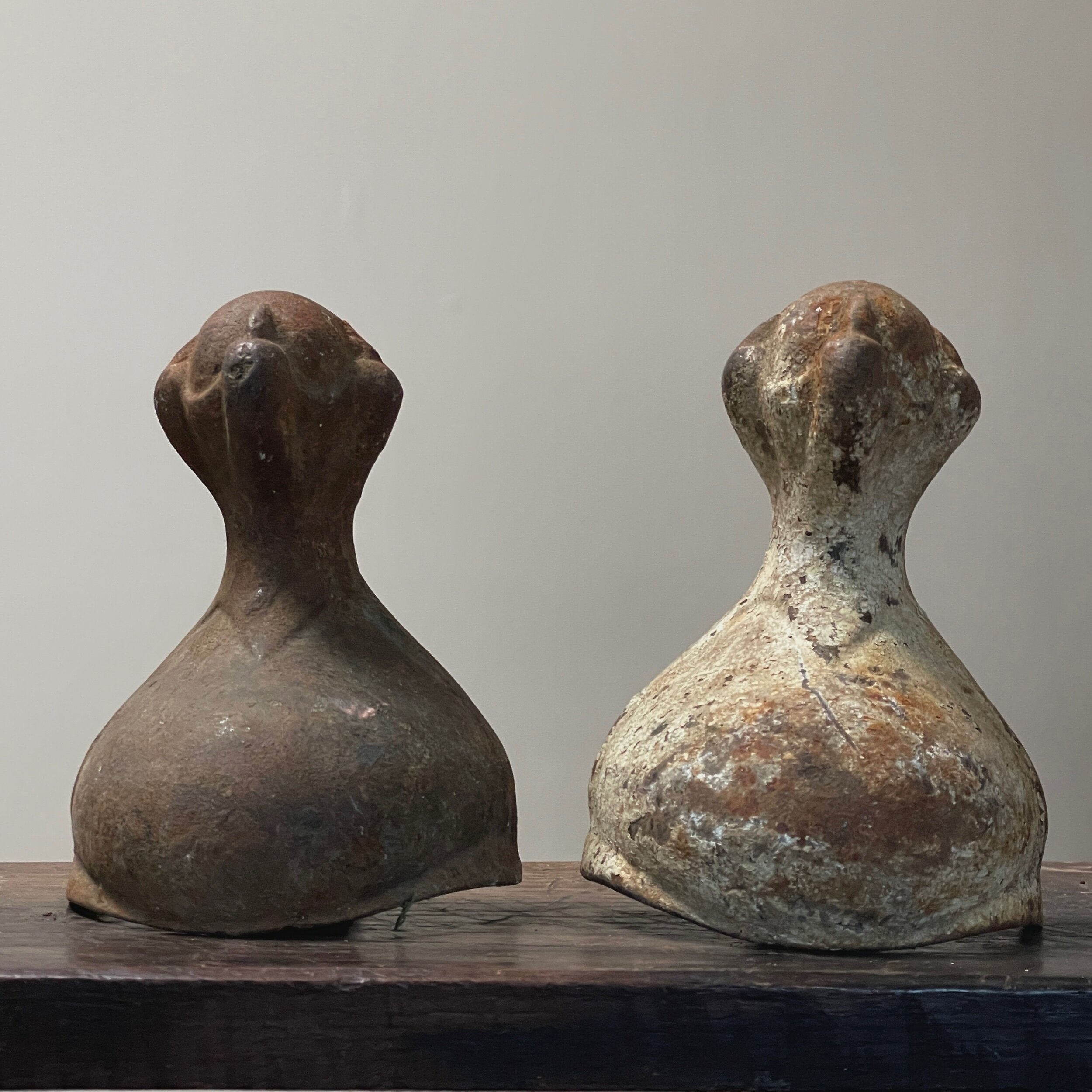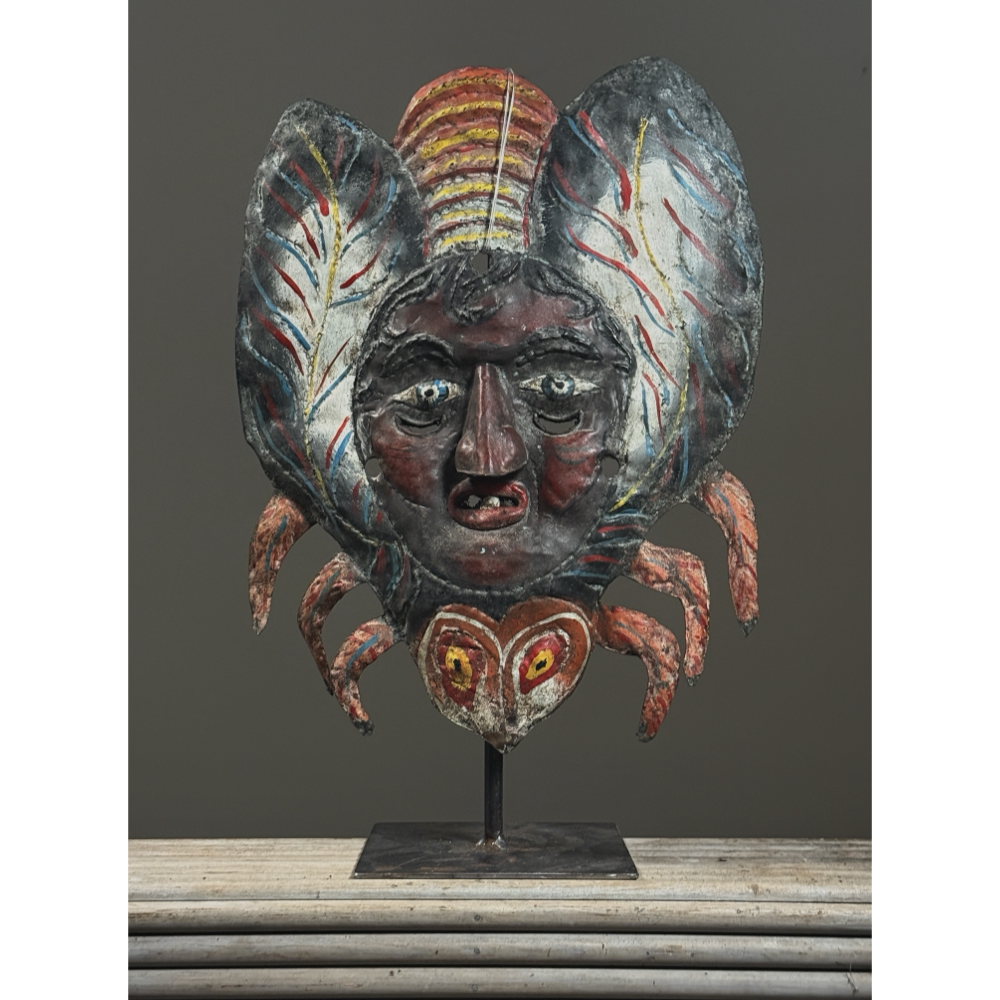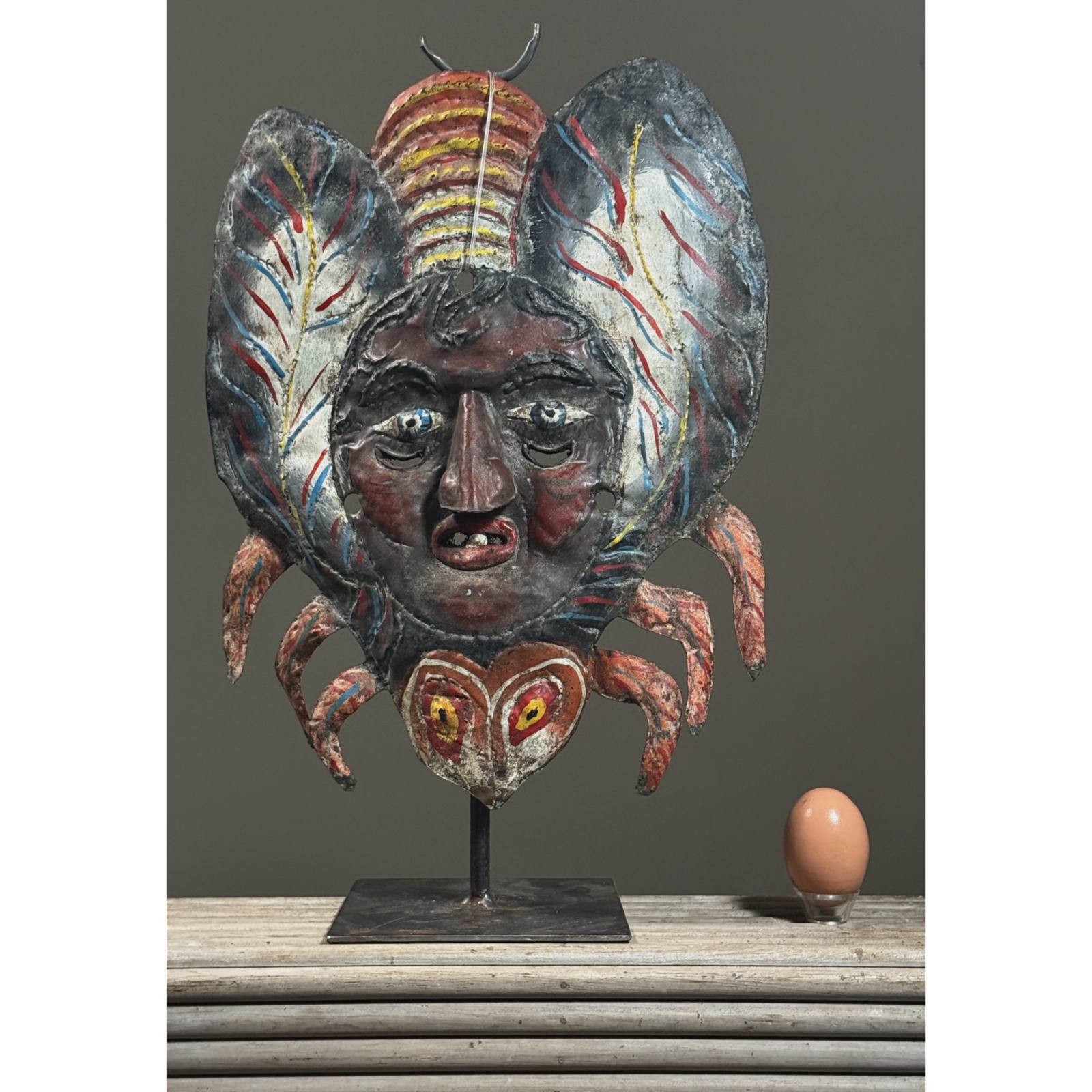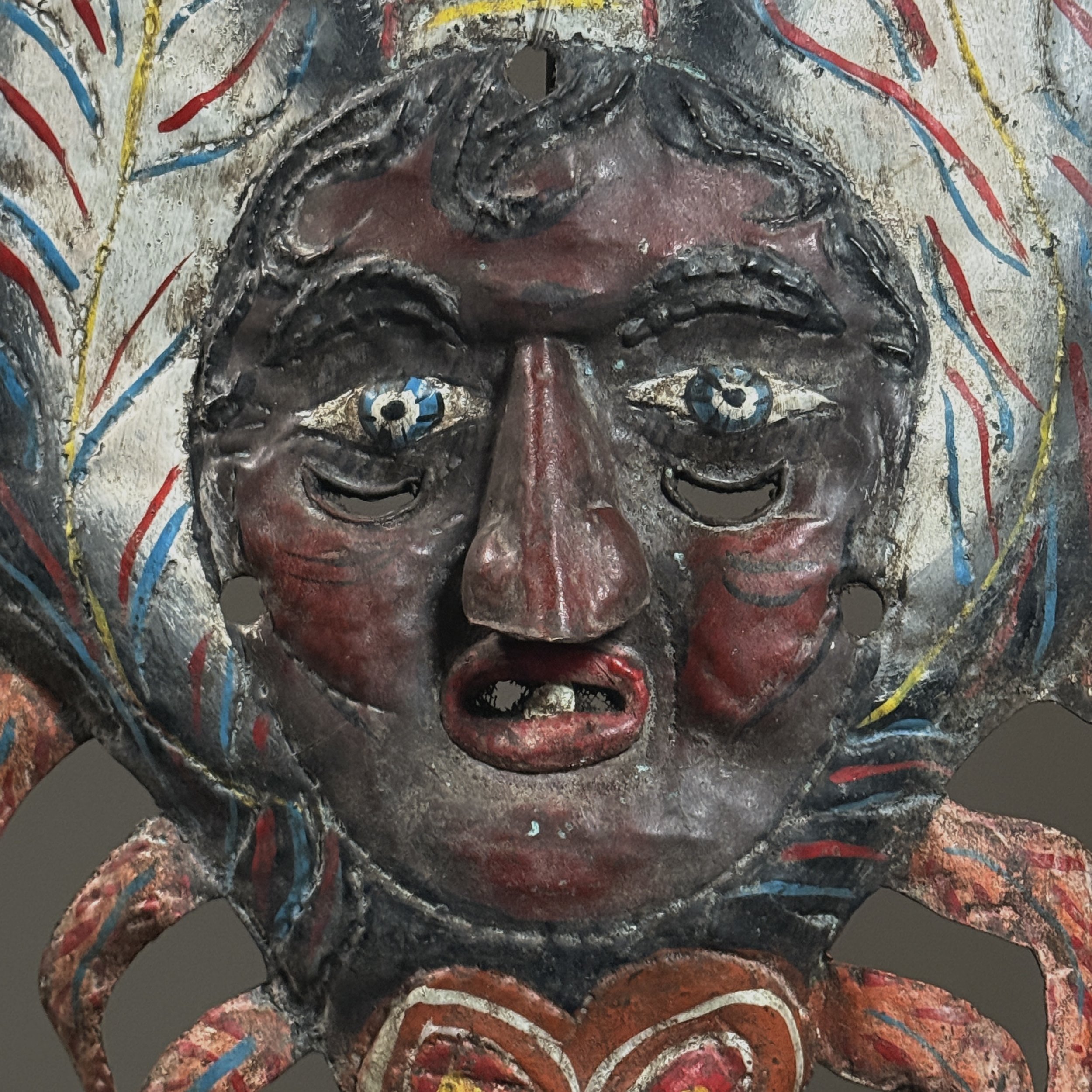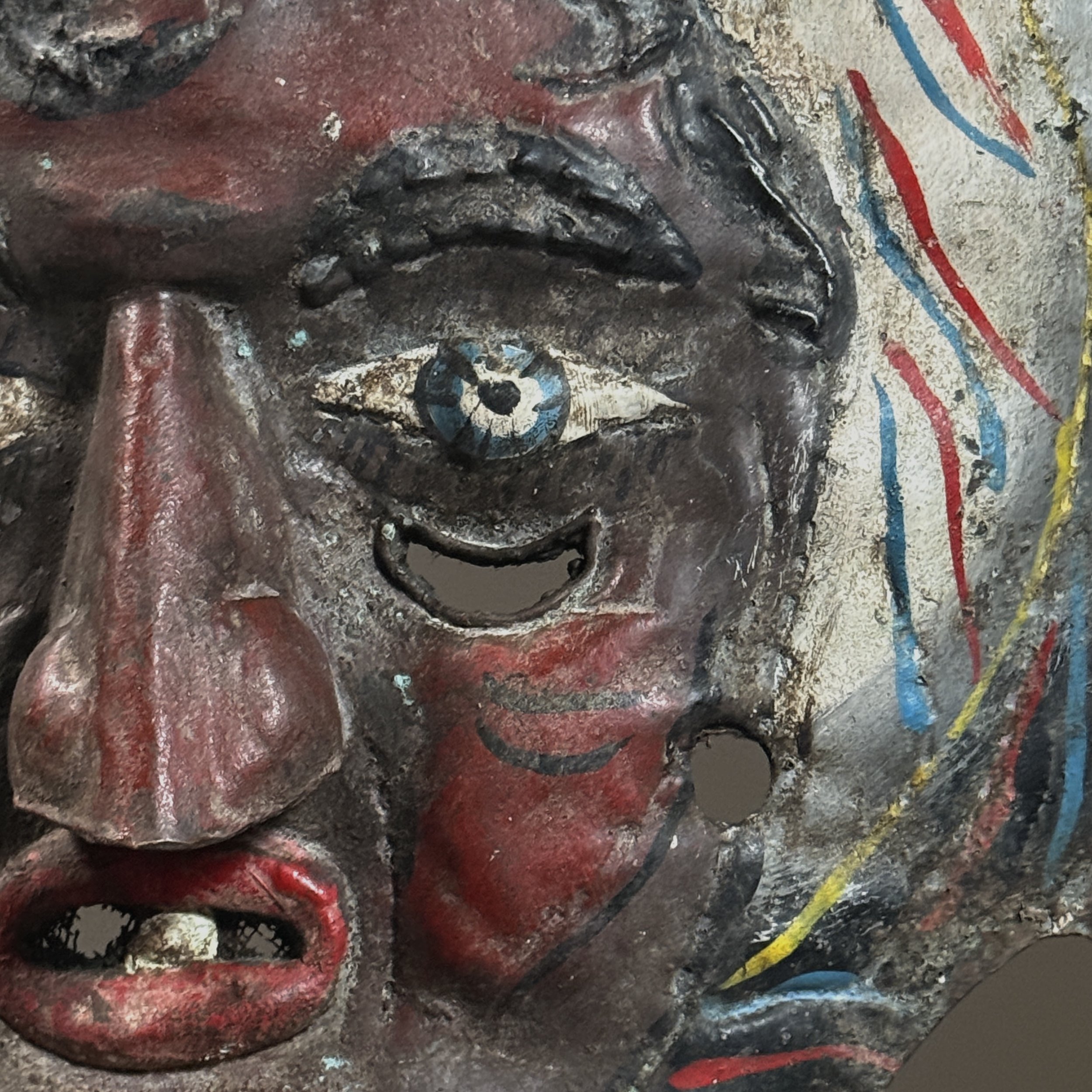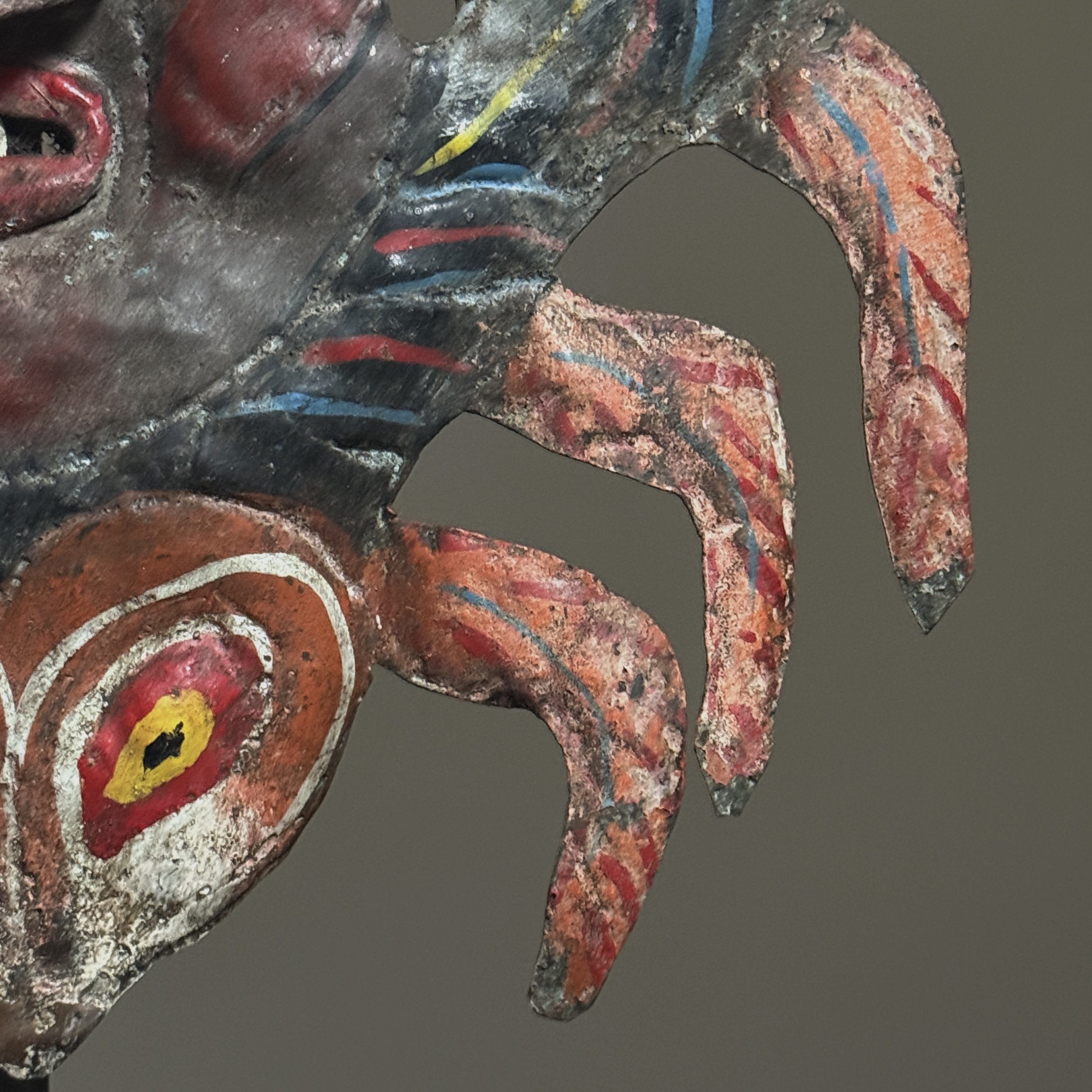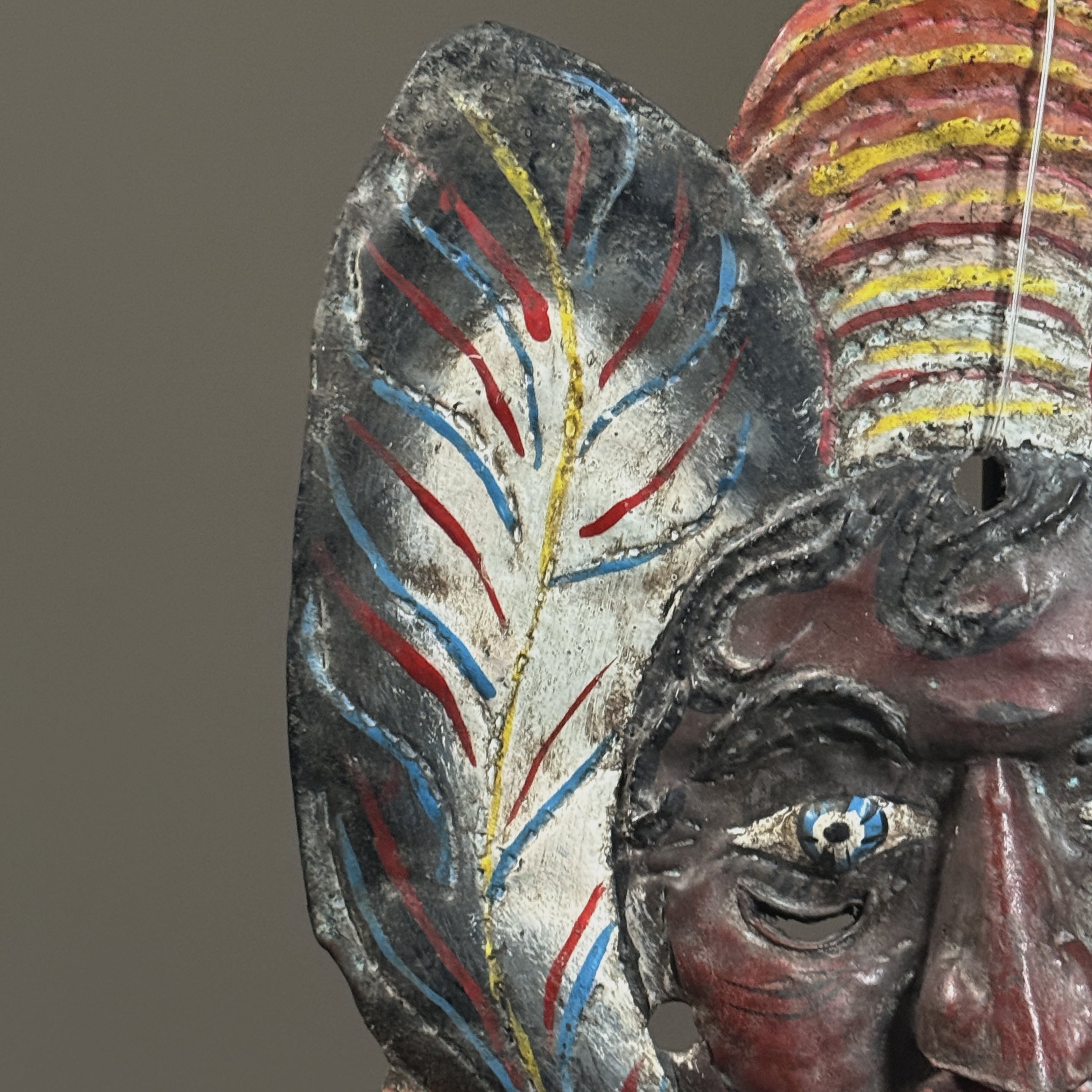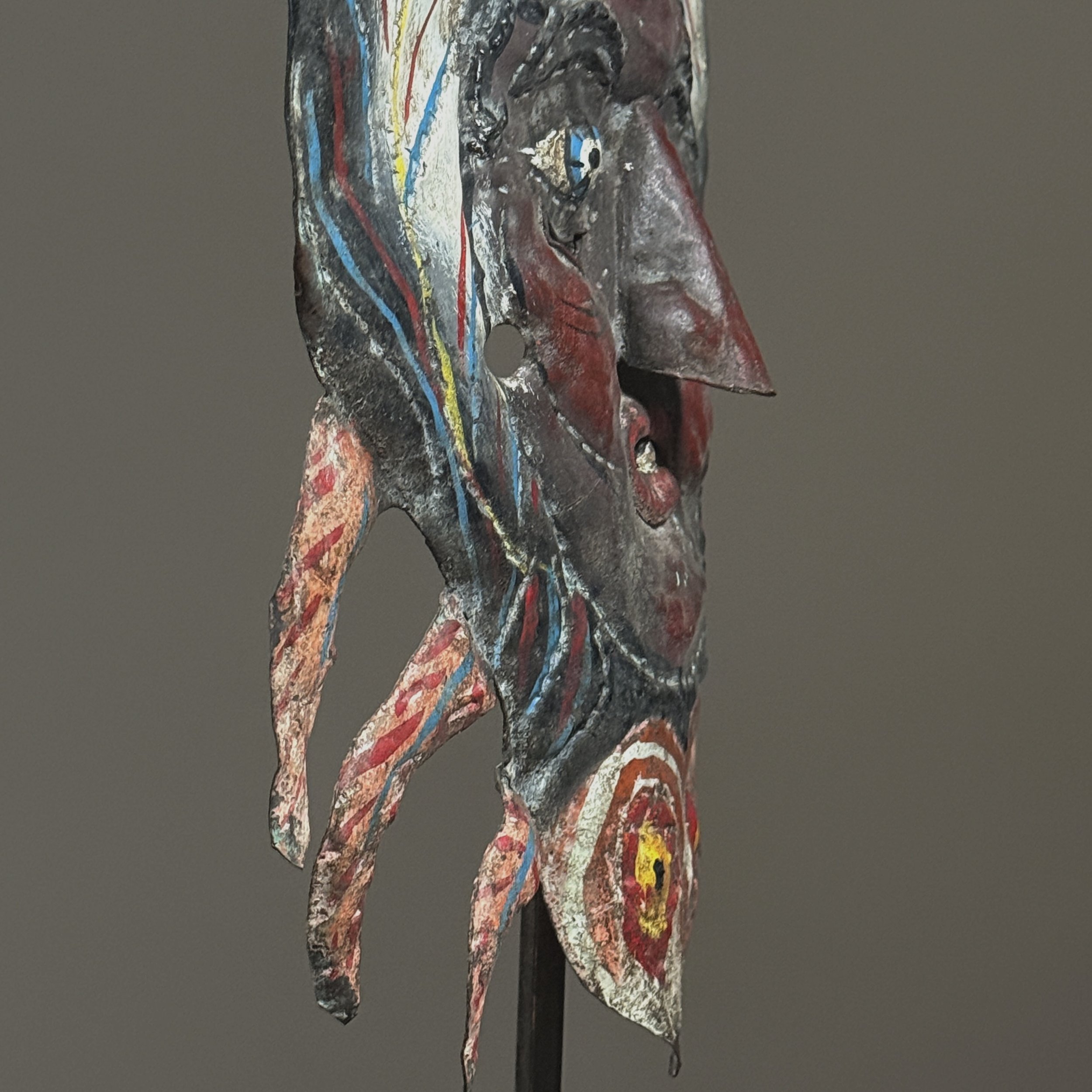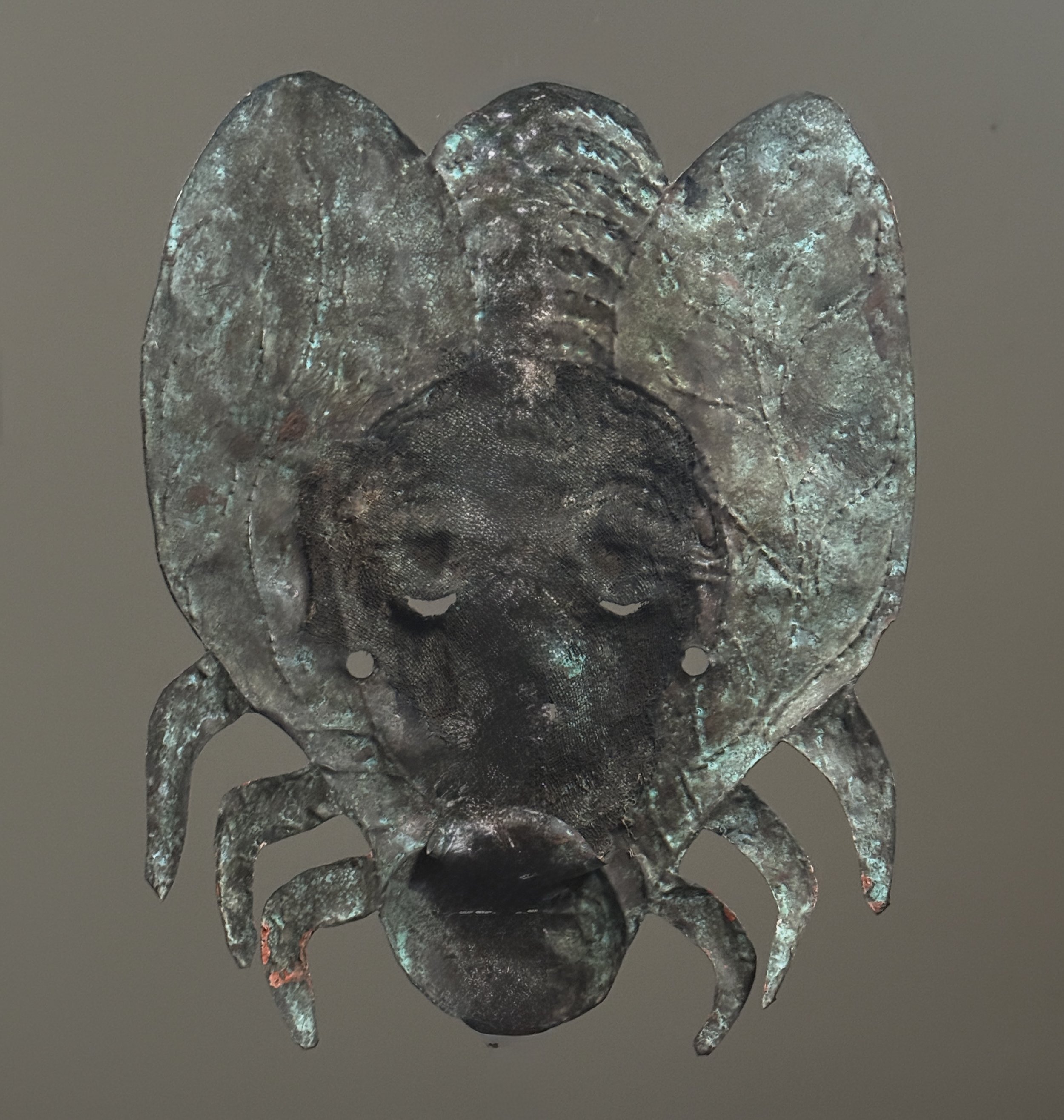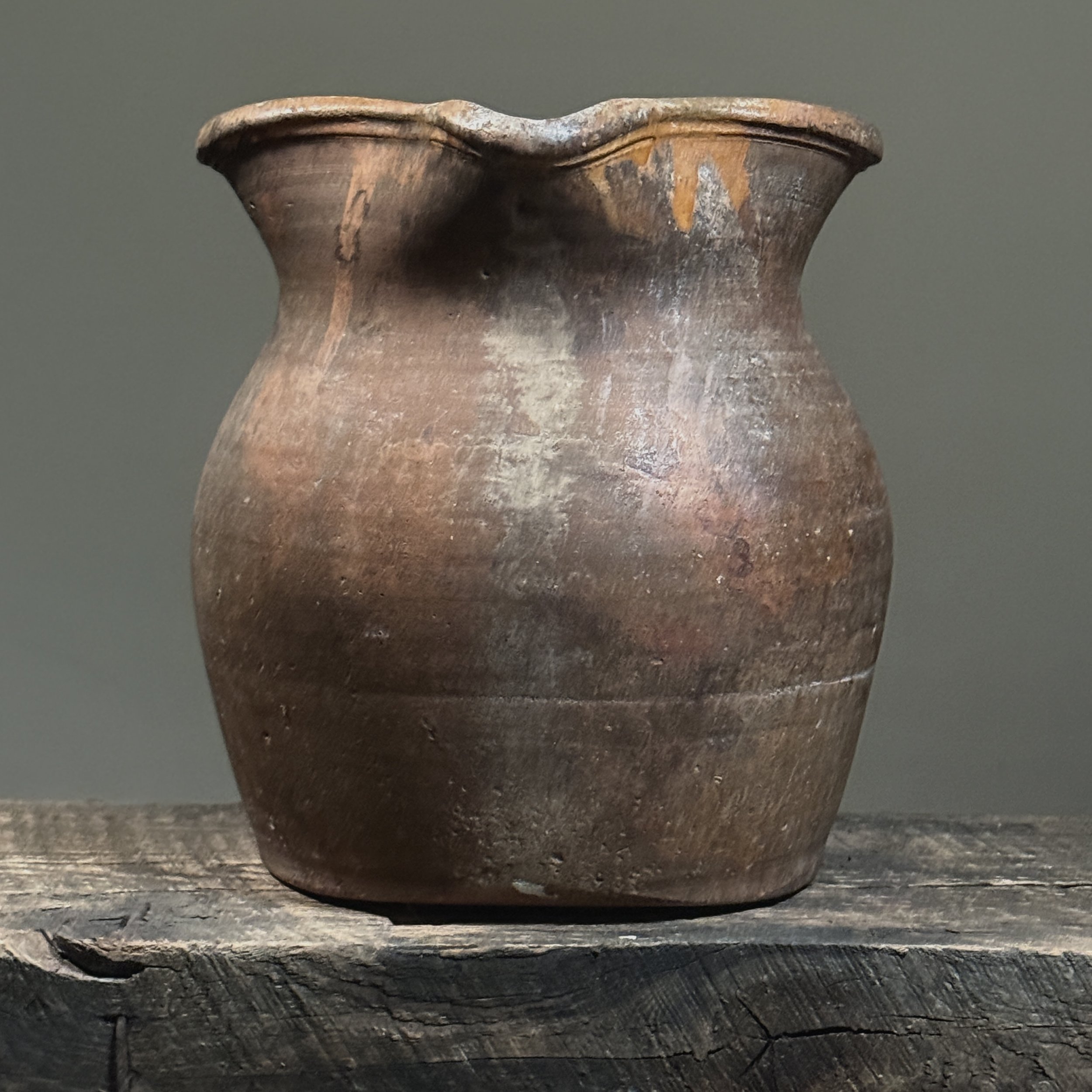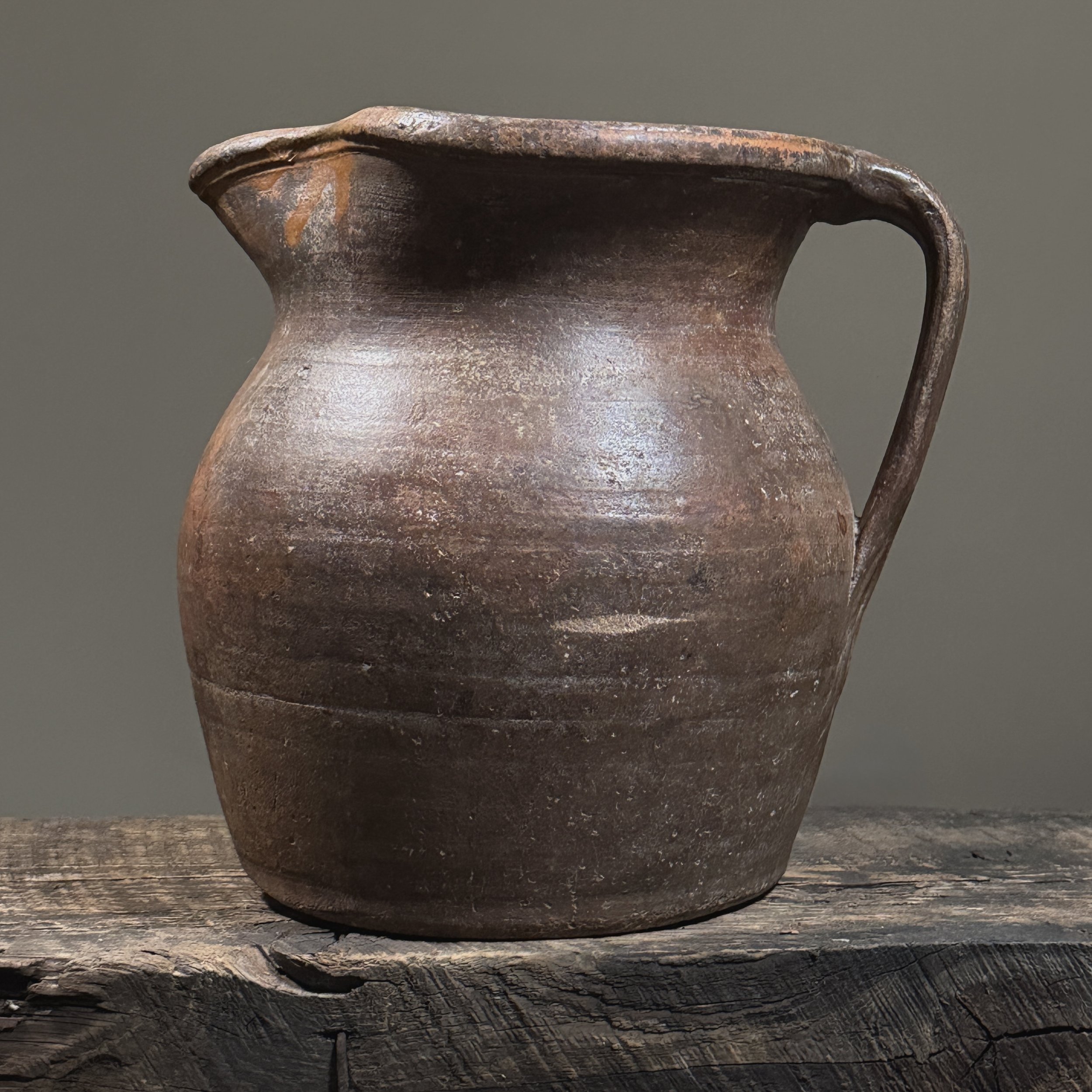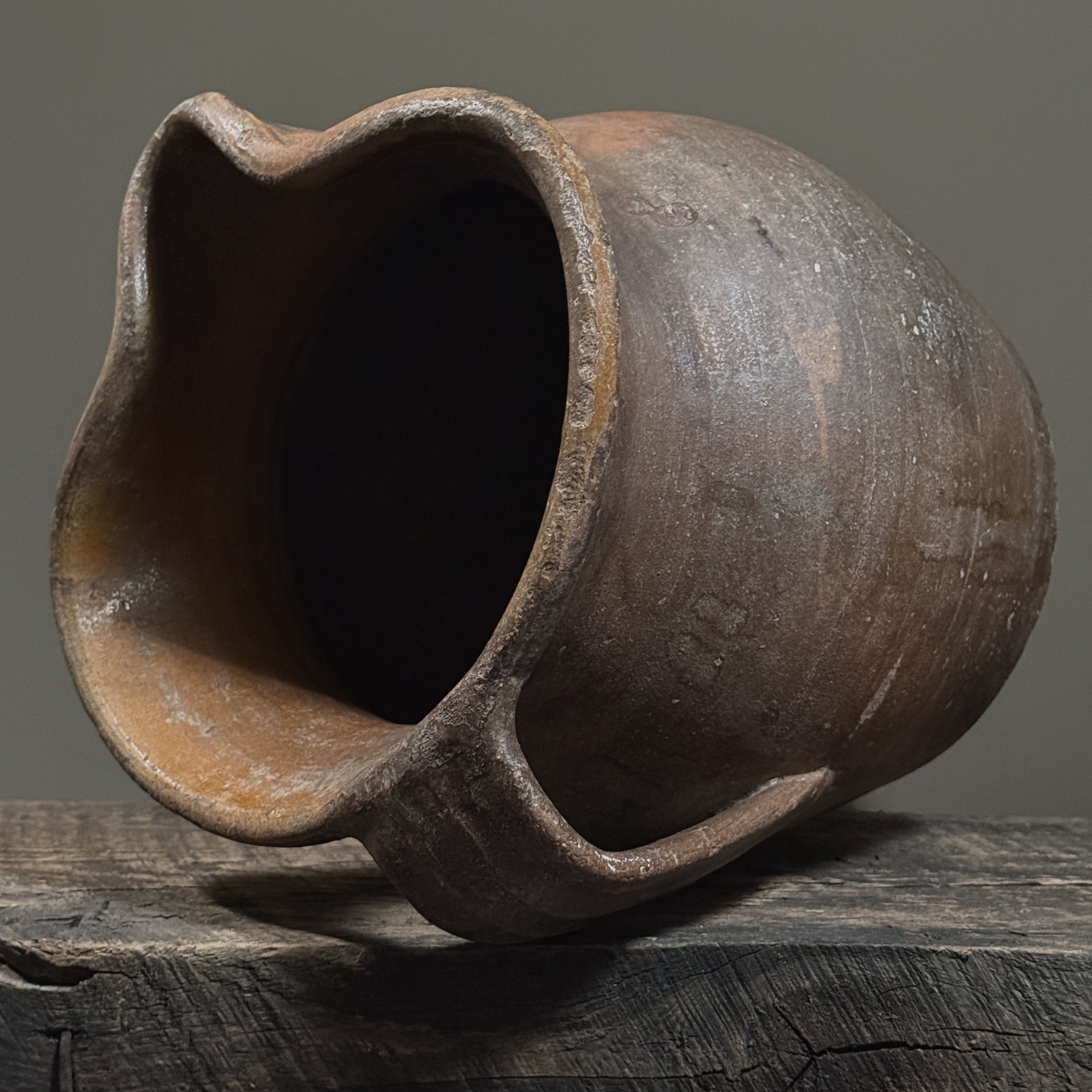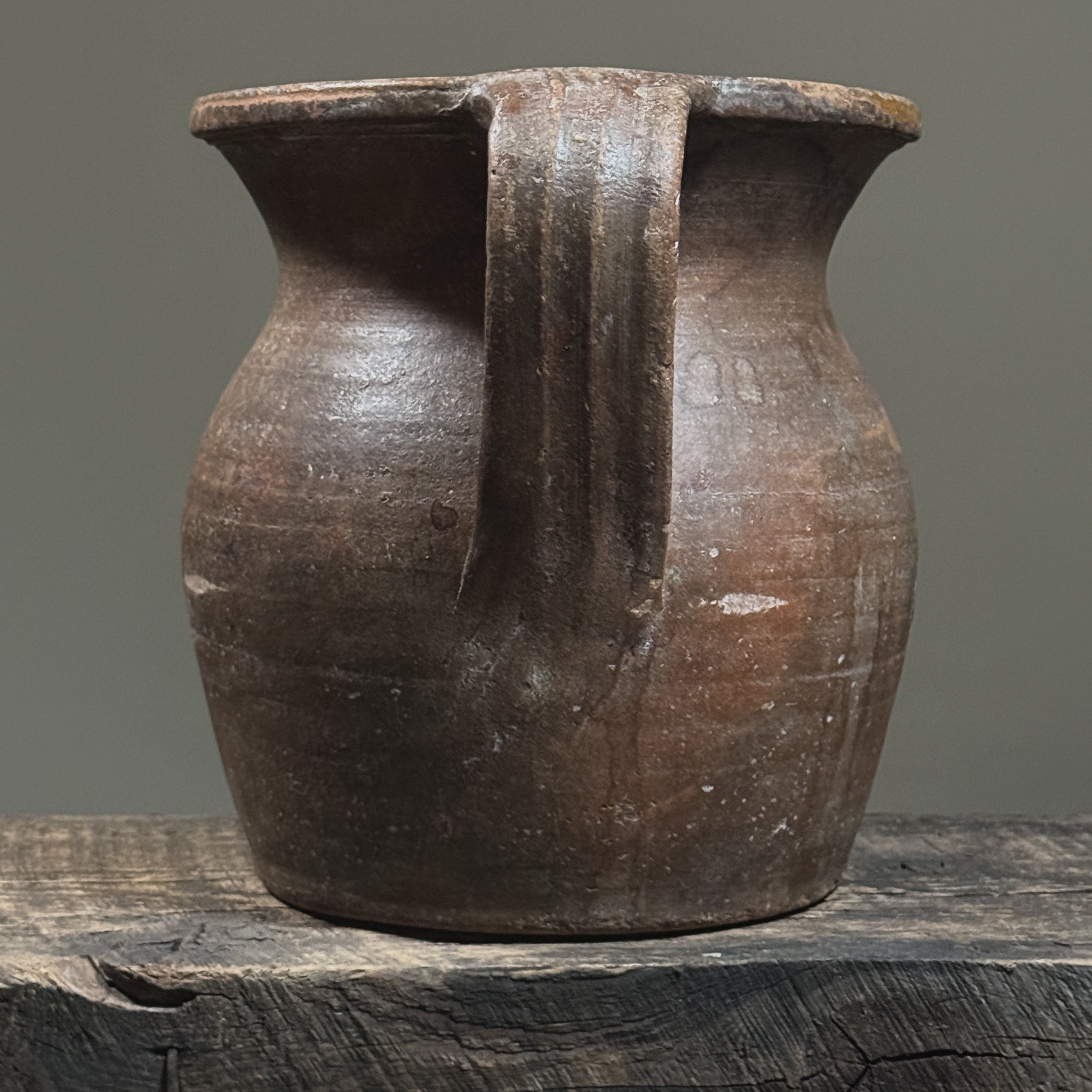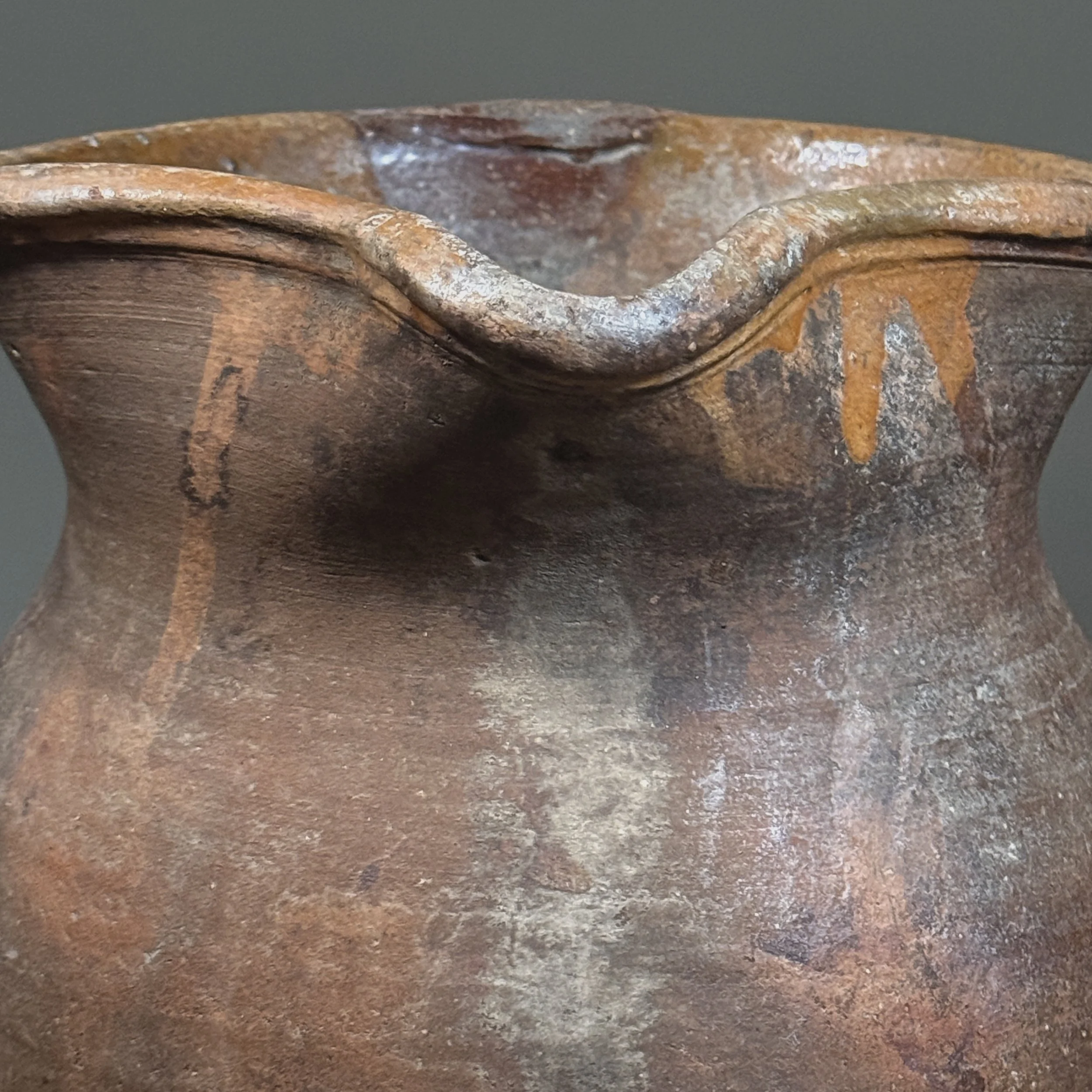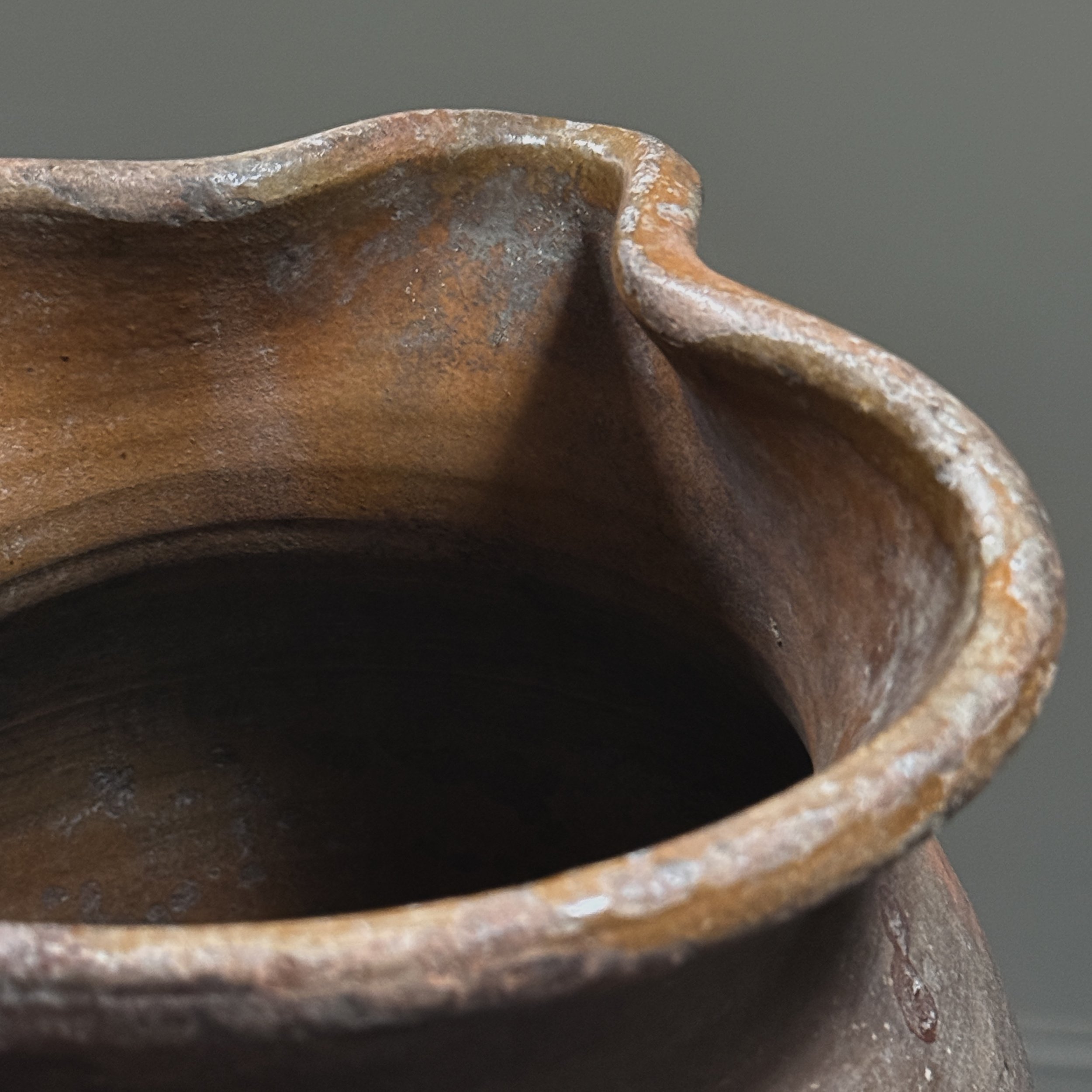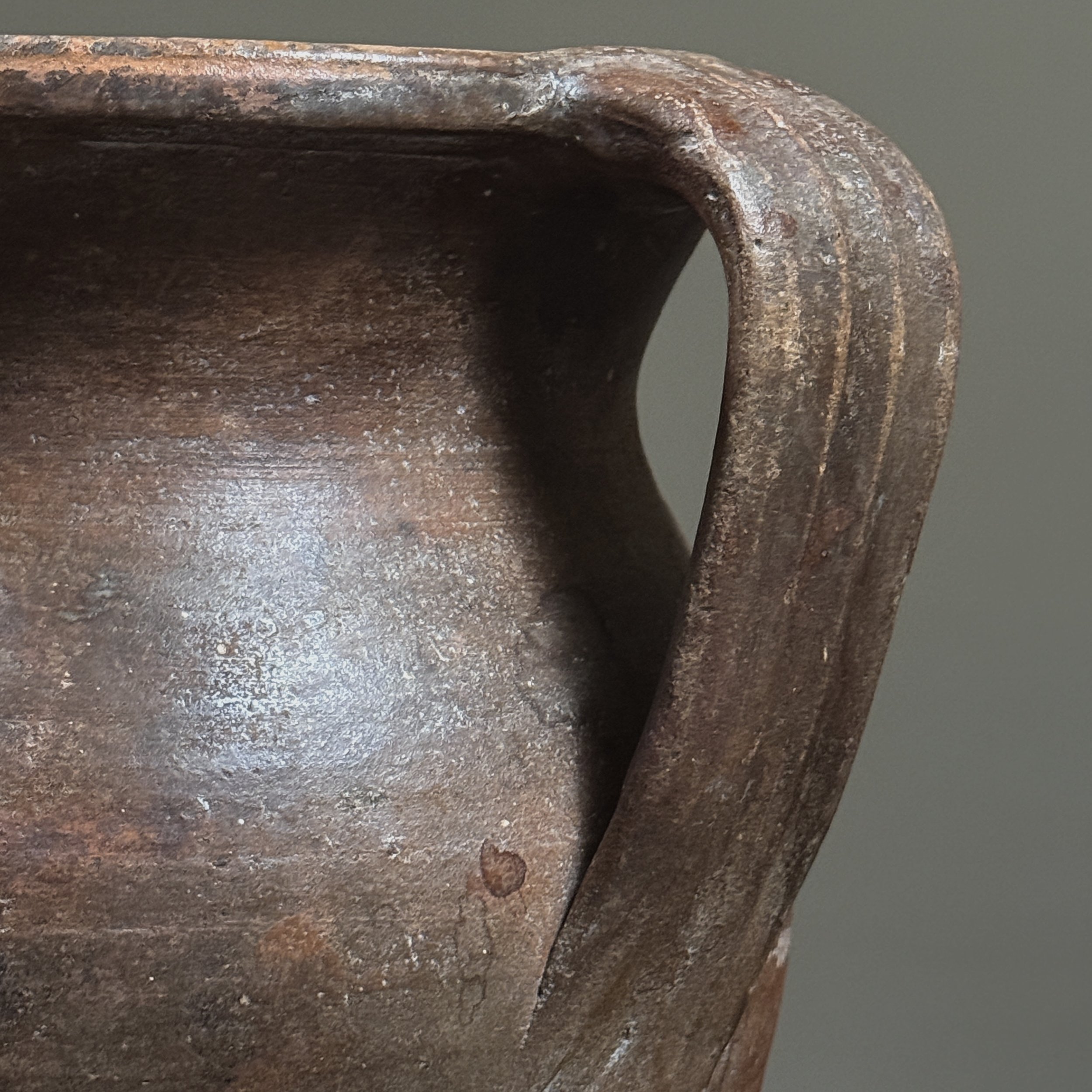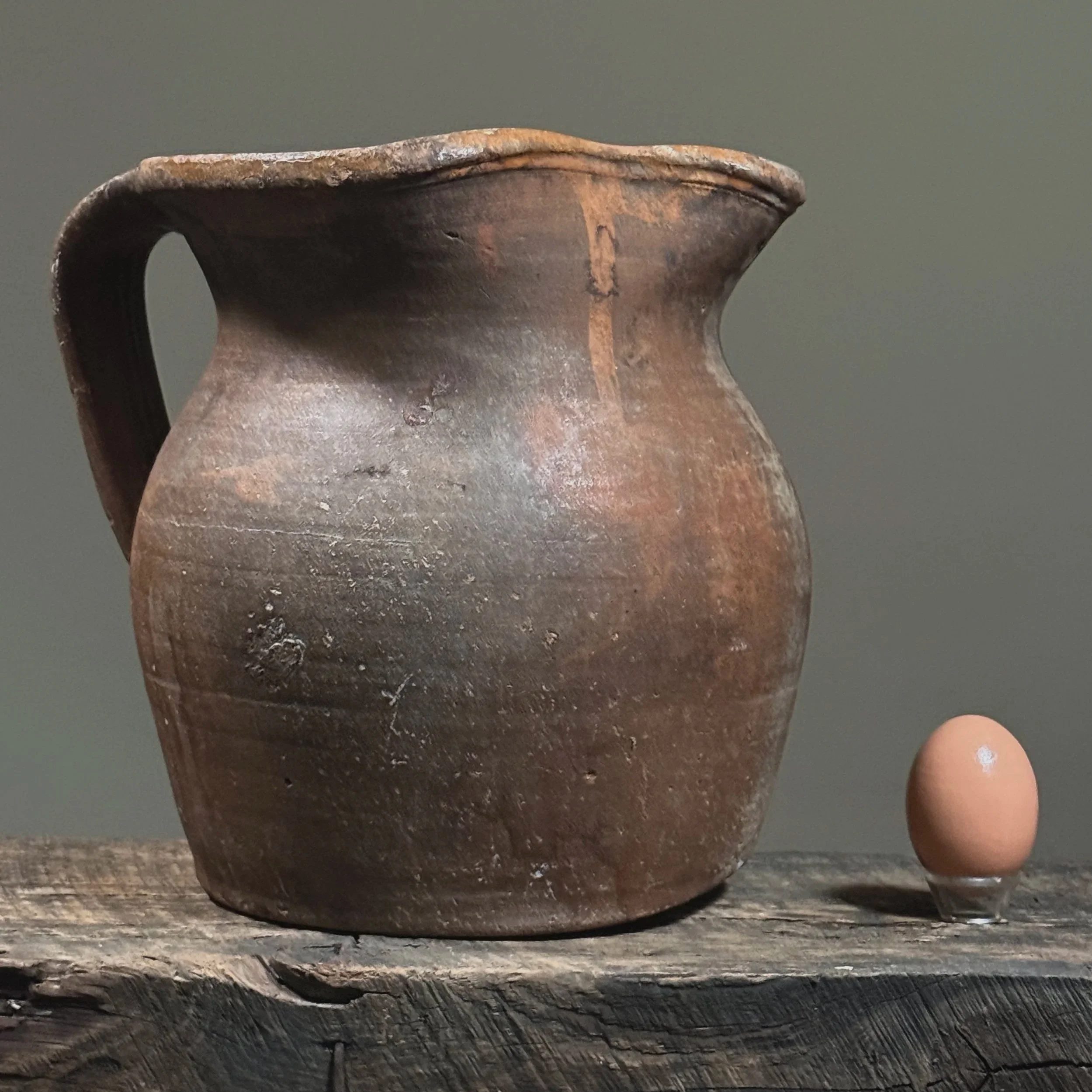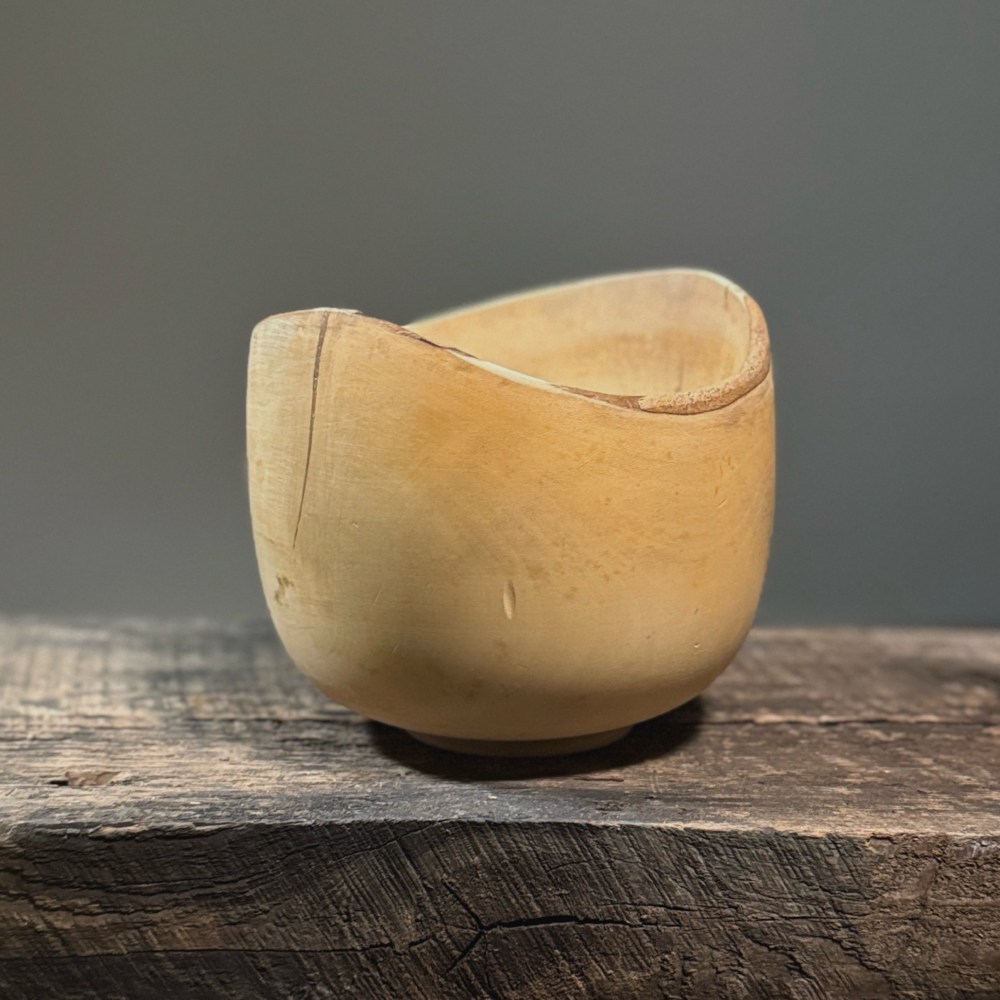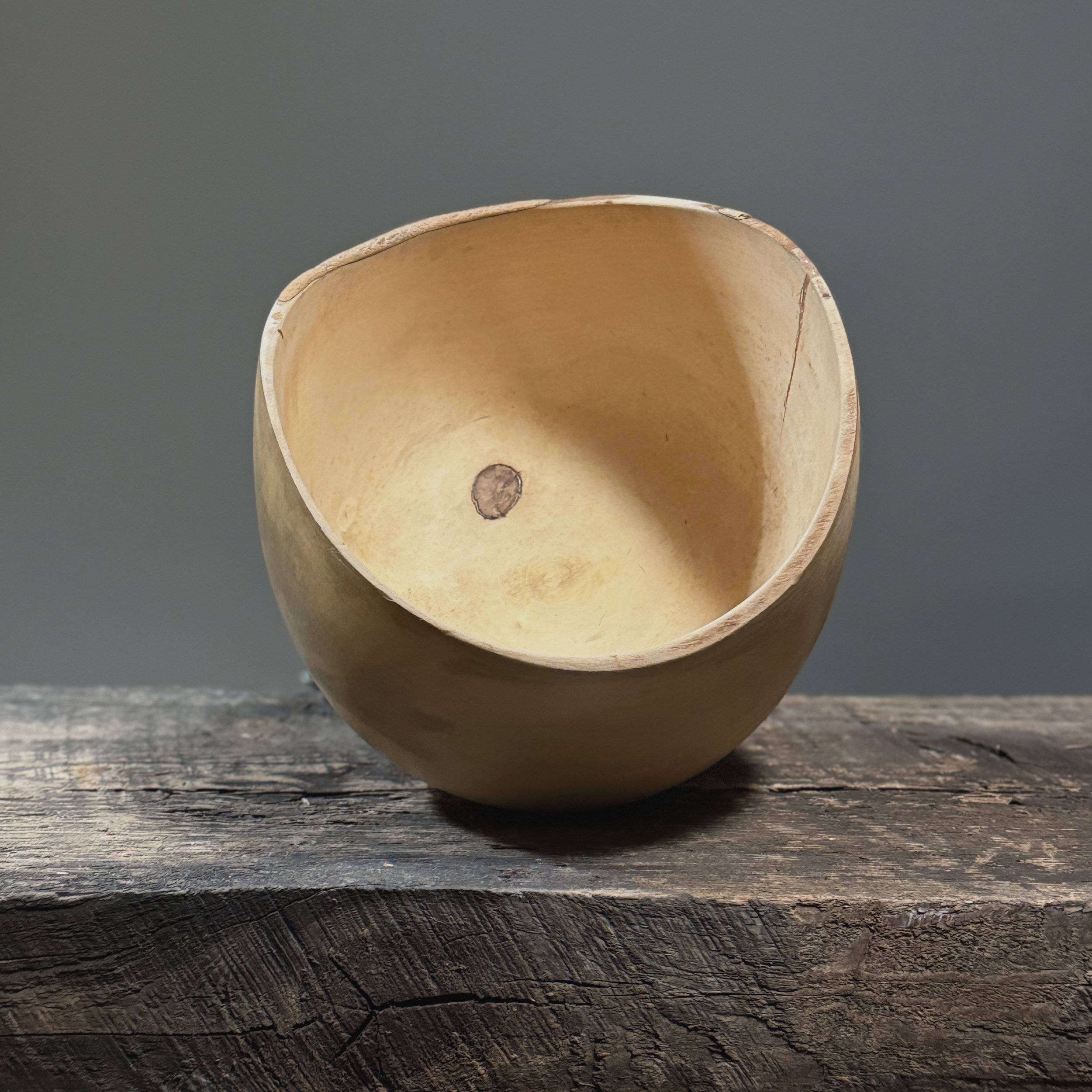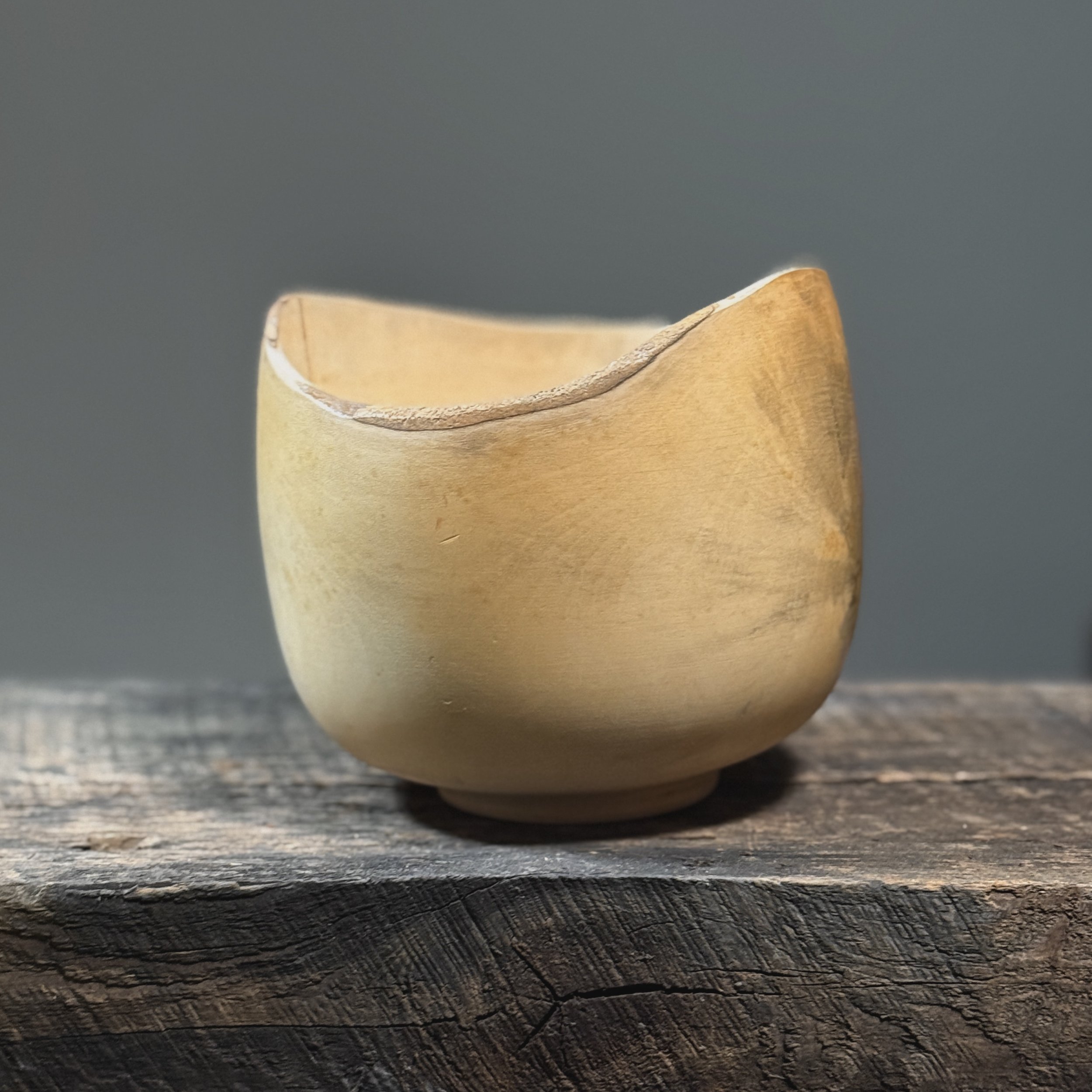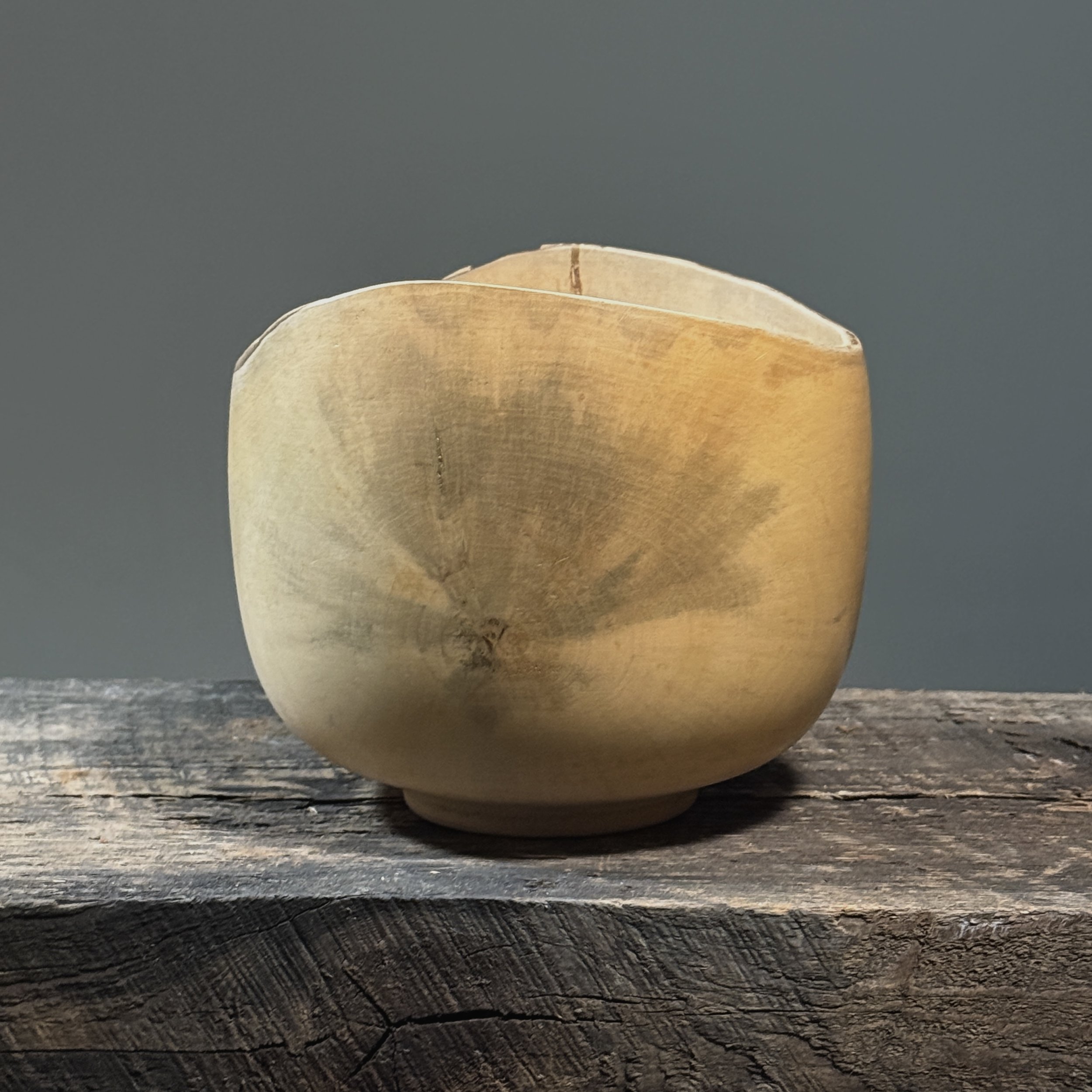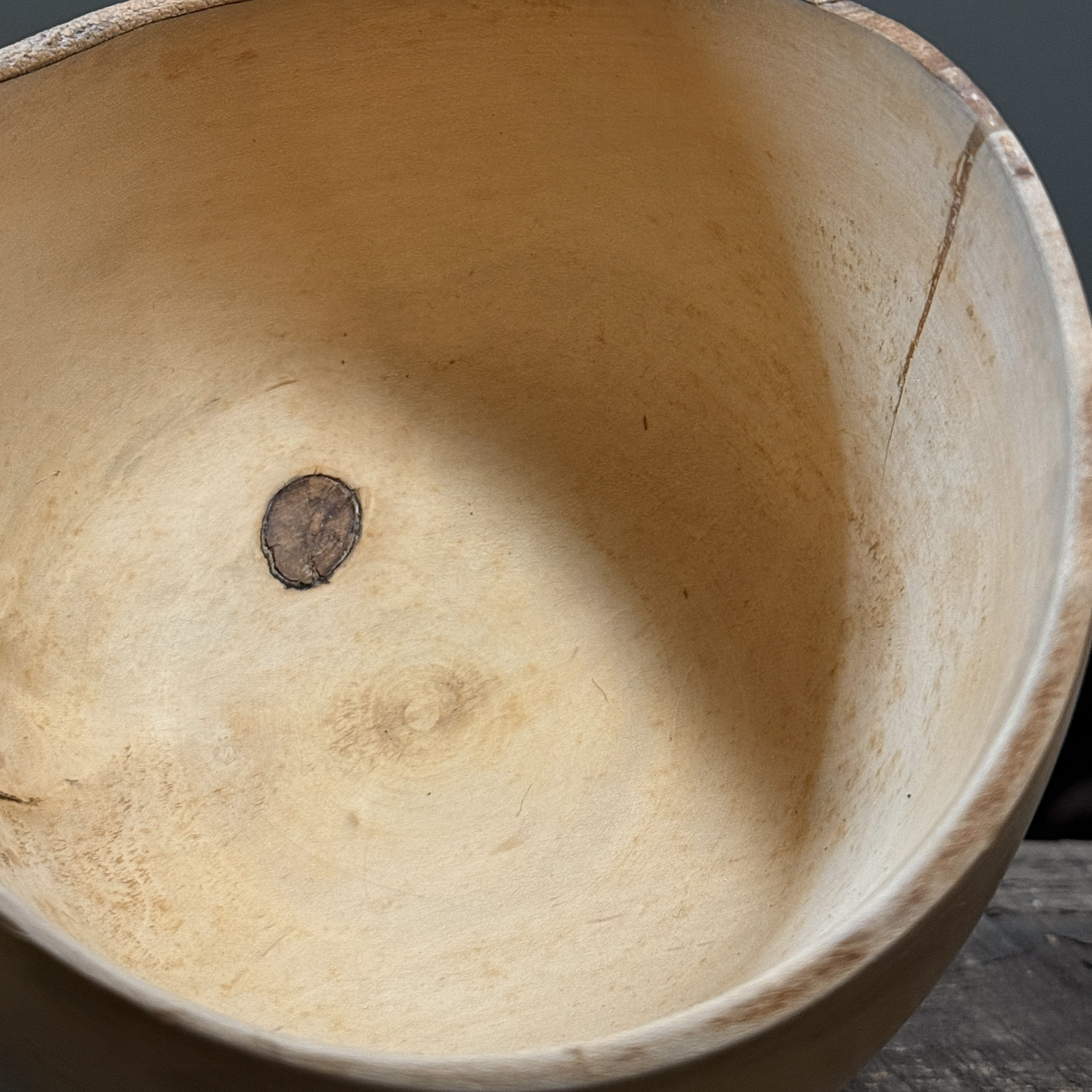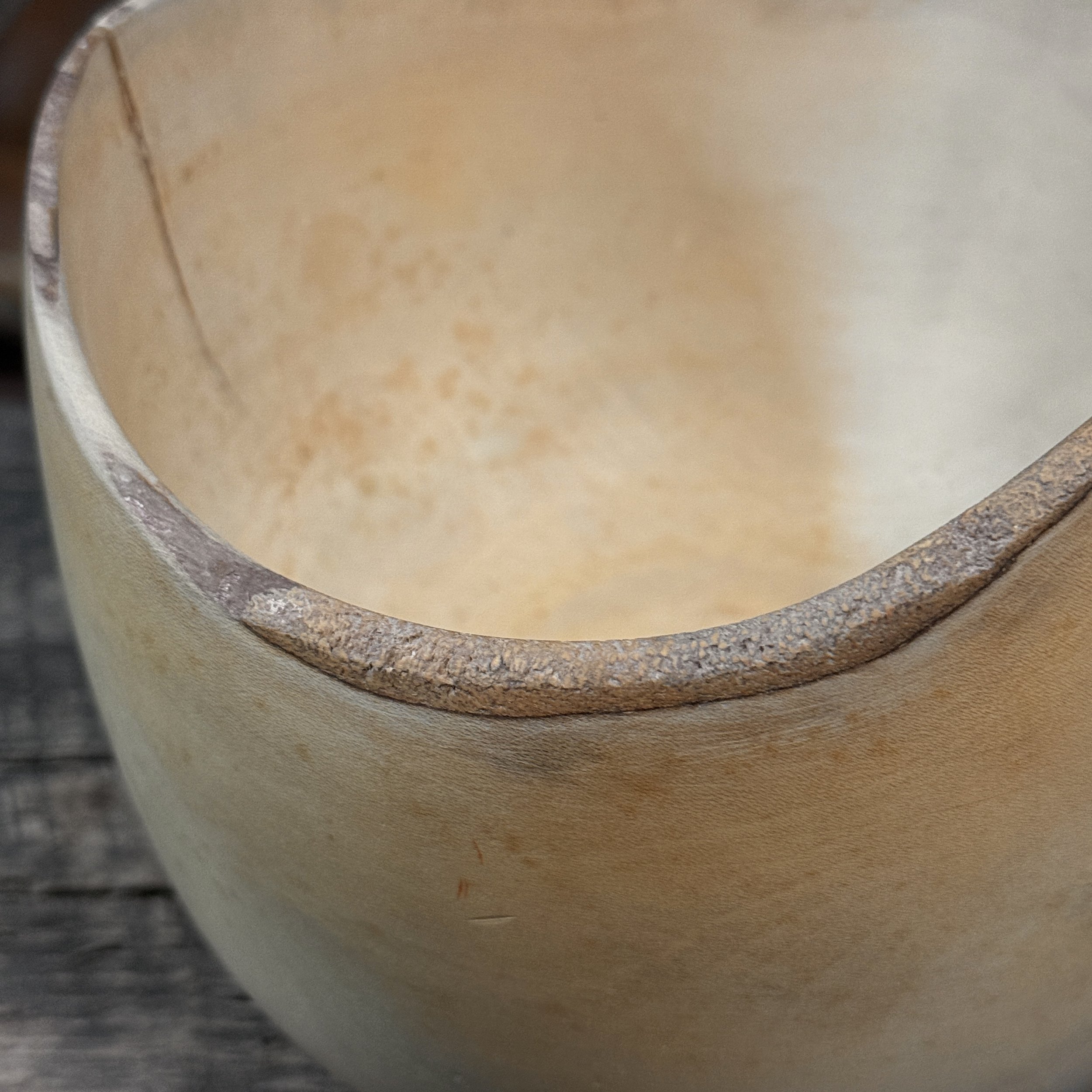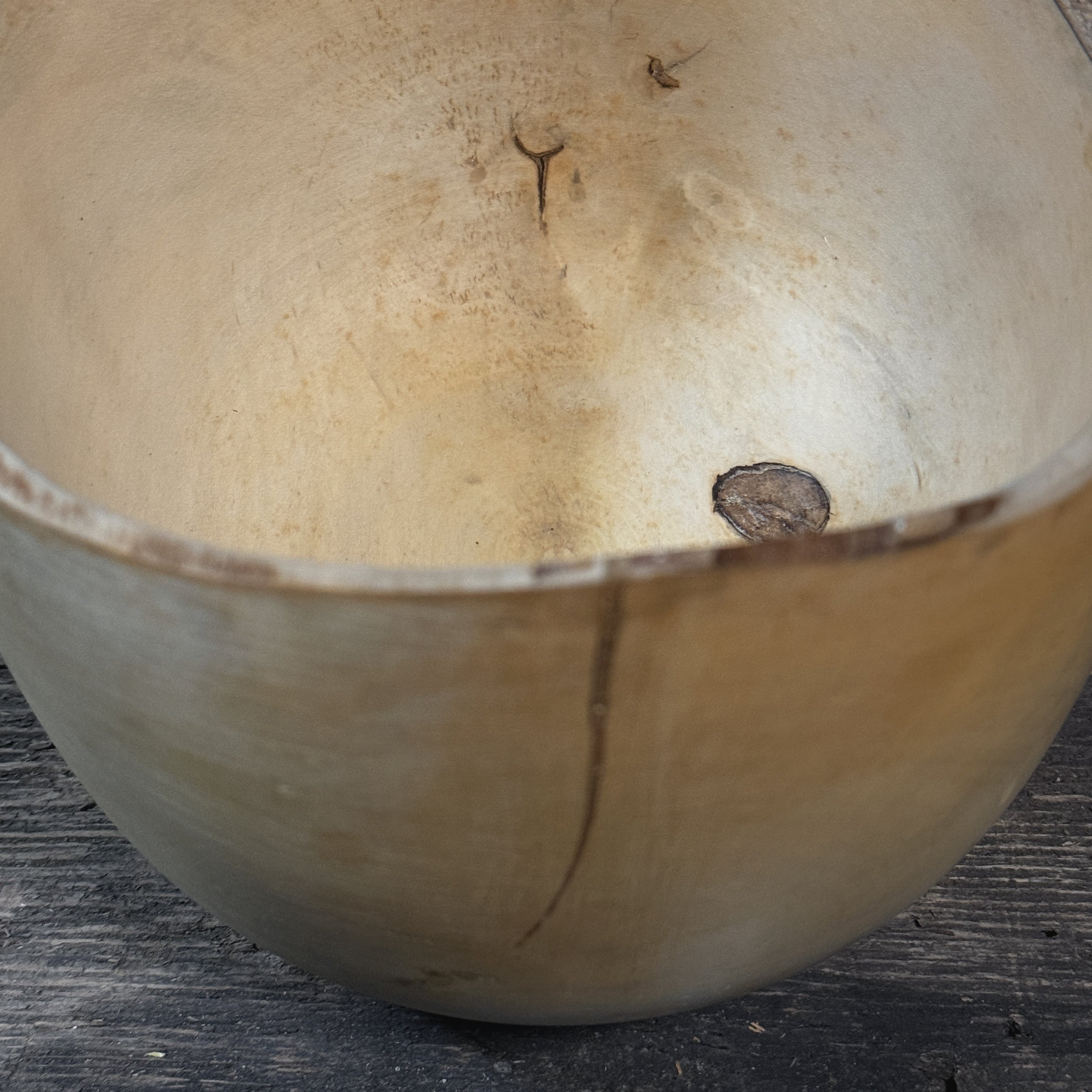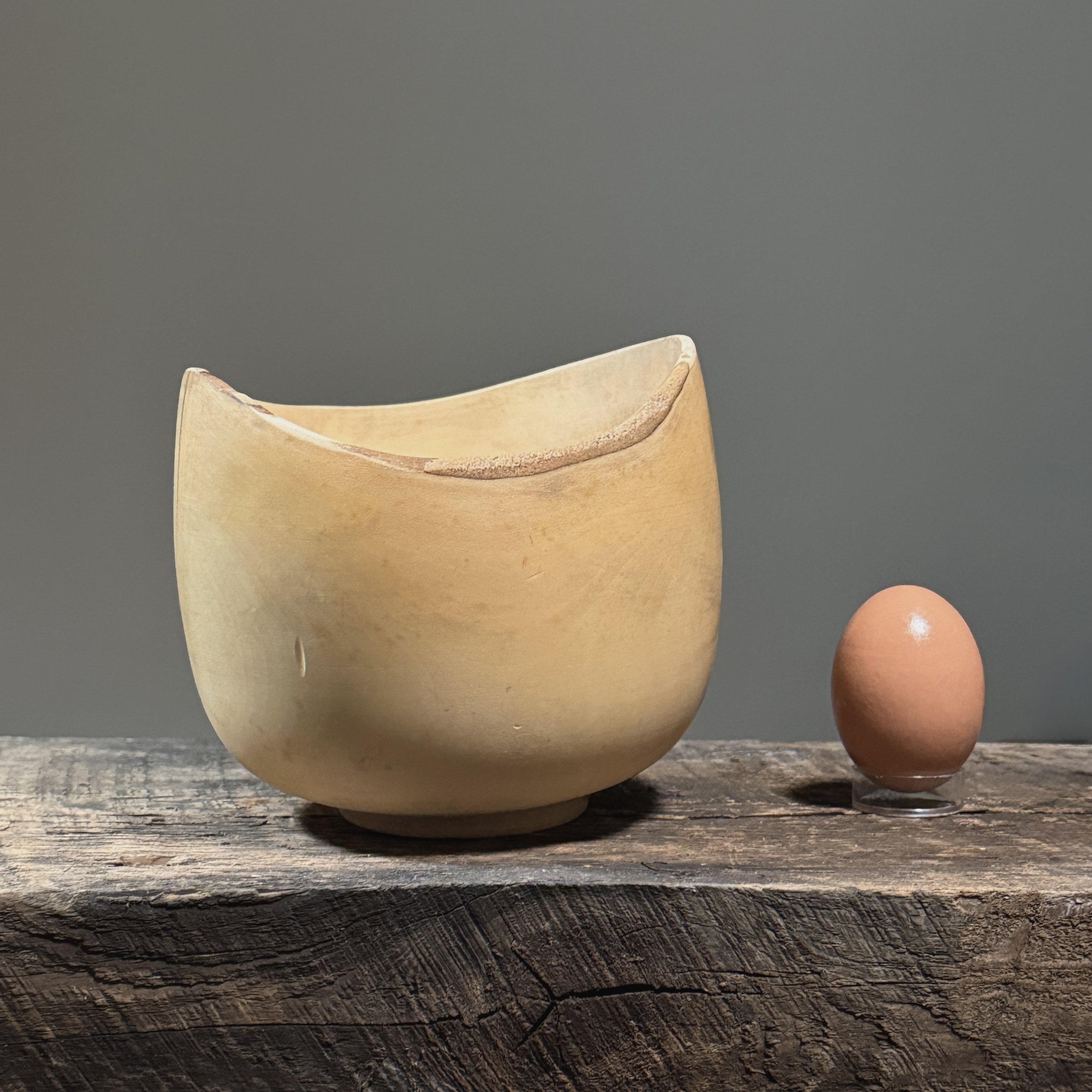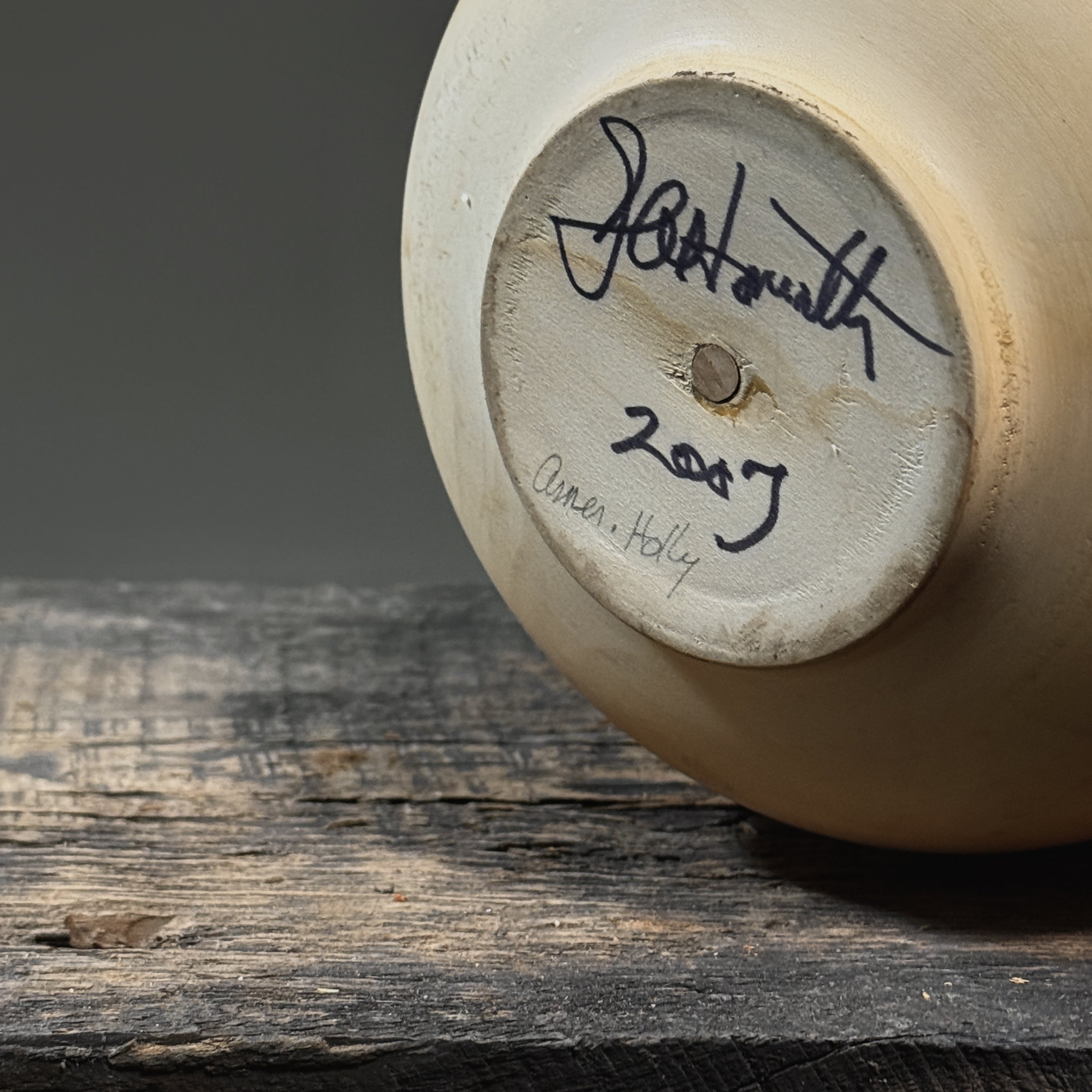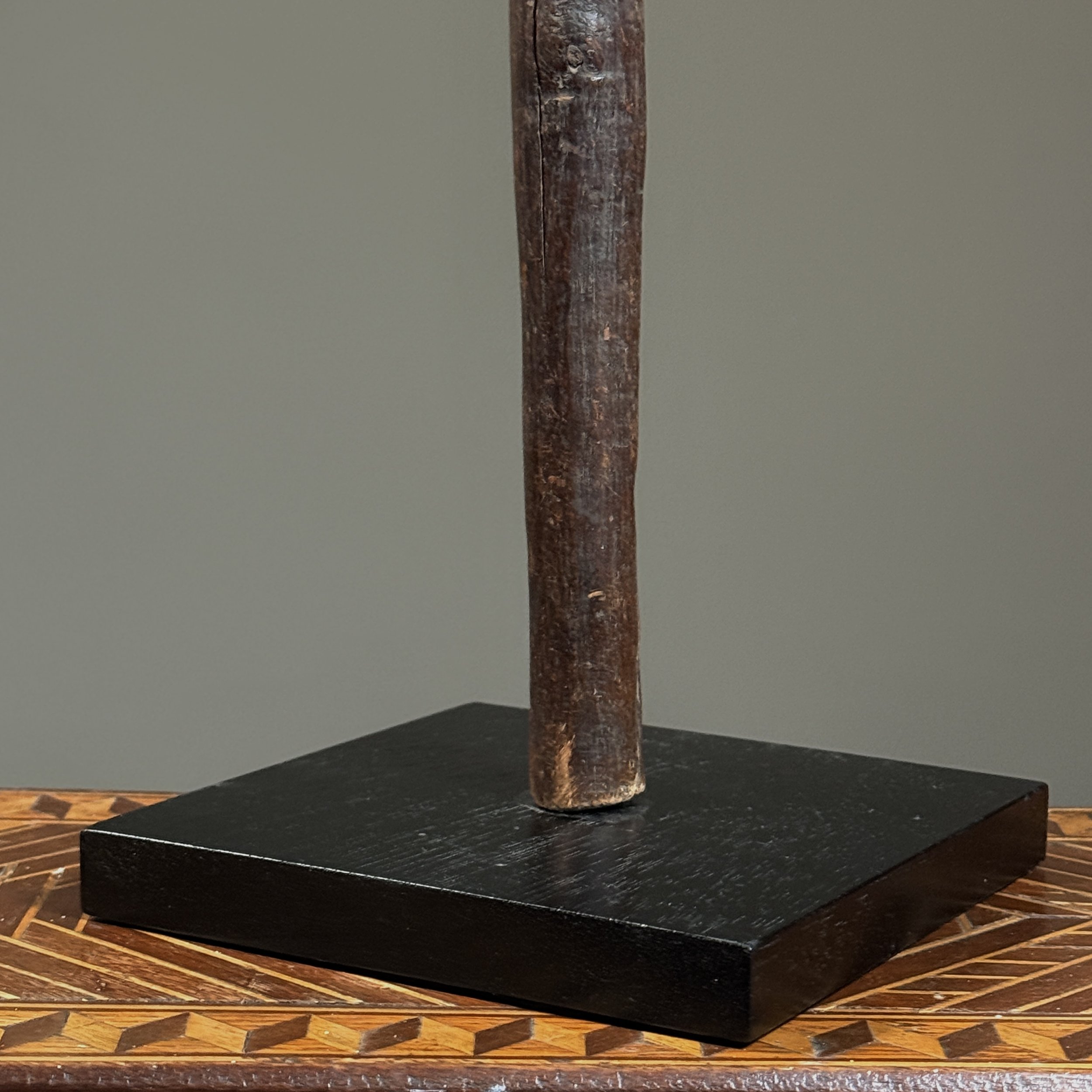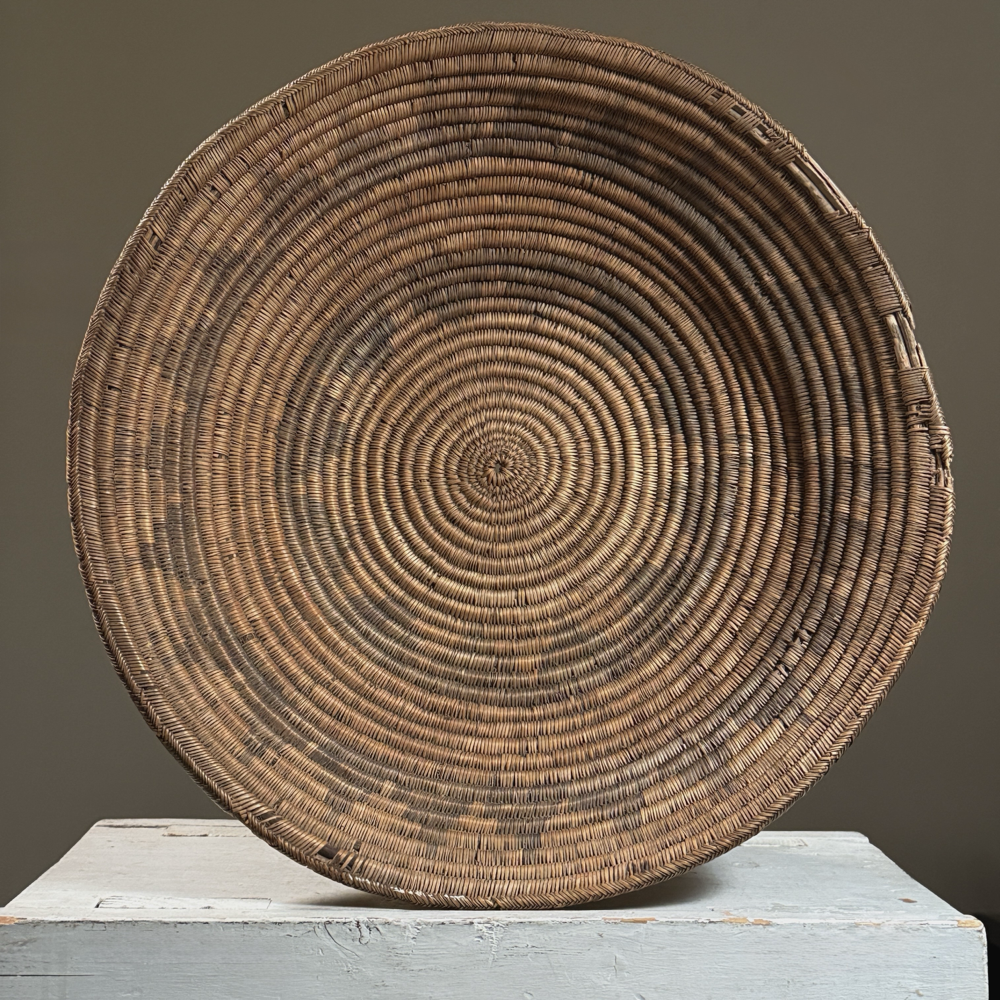 Image 1 of 9
Image 1 of 9

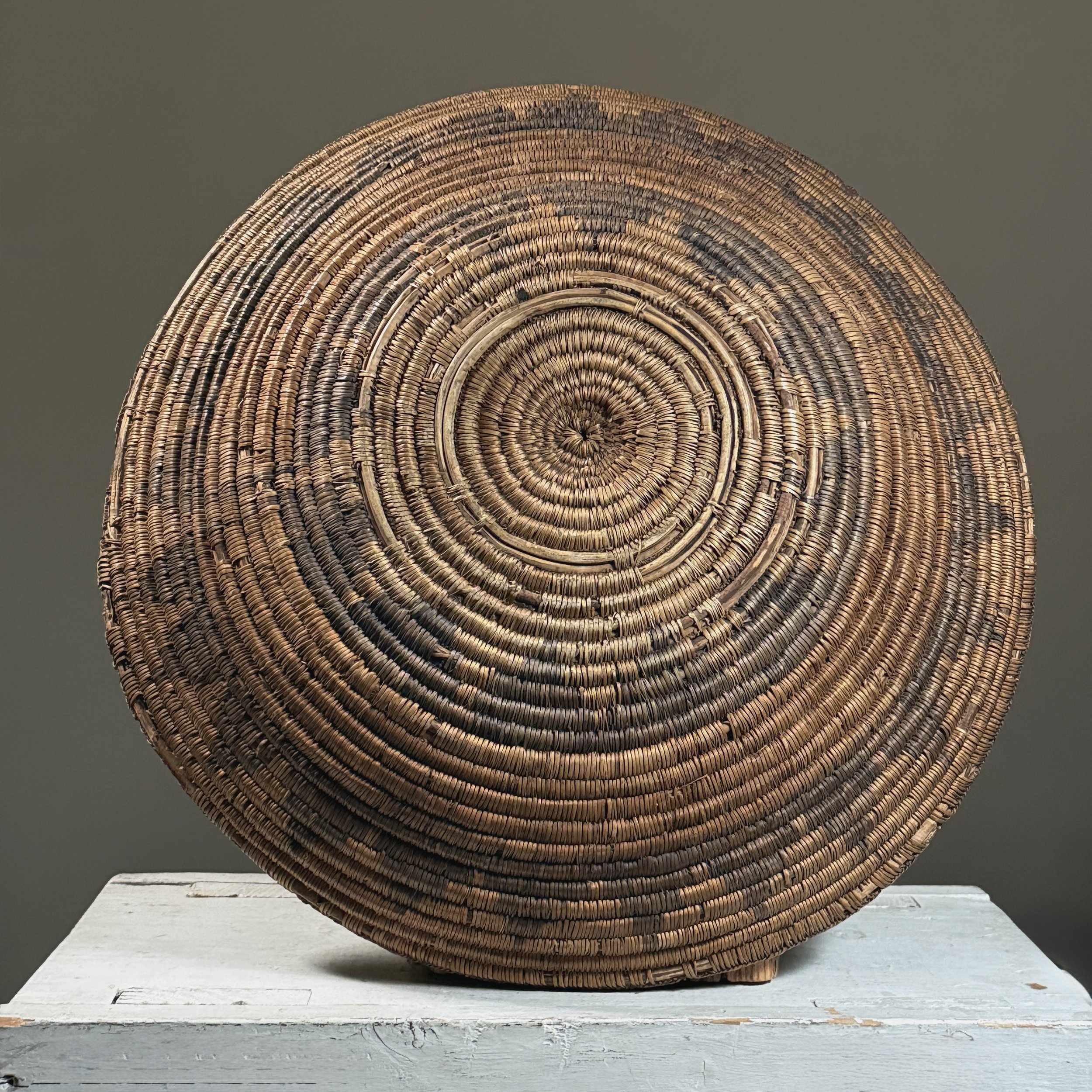 Image 2 of 9
Image 2 of 9

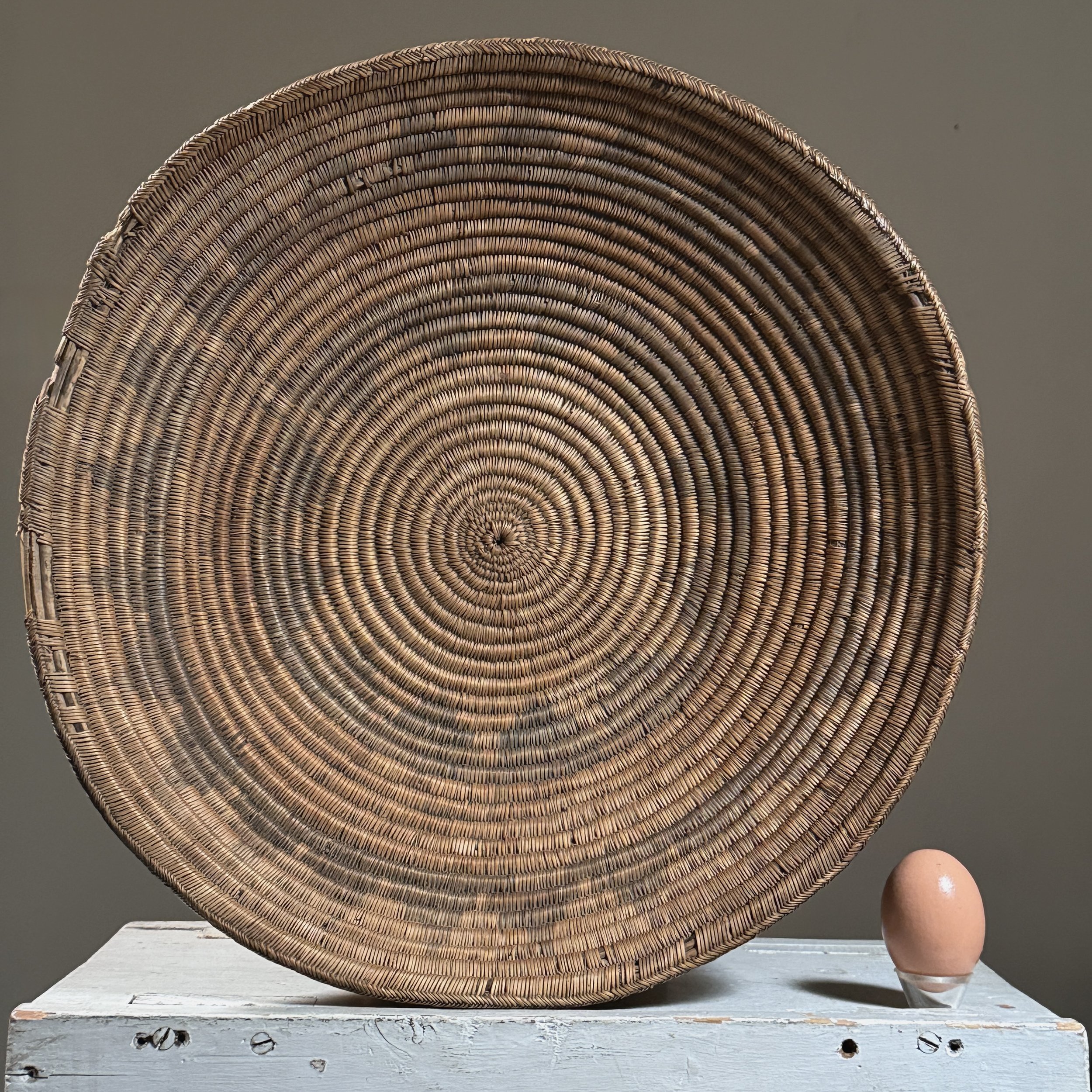 Image 3 of 9
Image 3 of 9

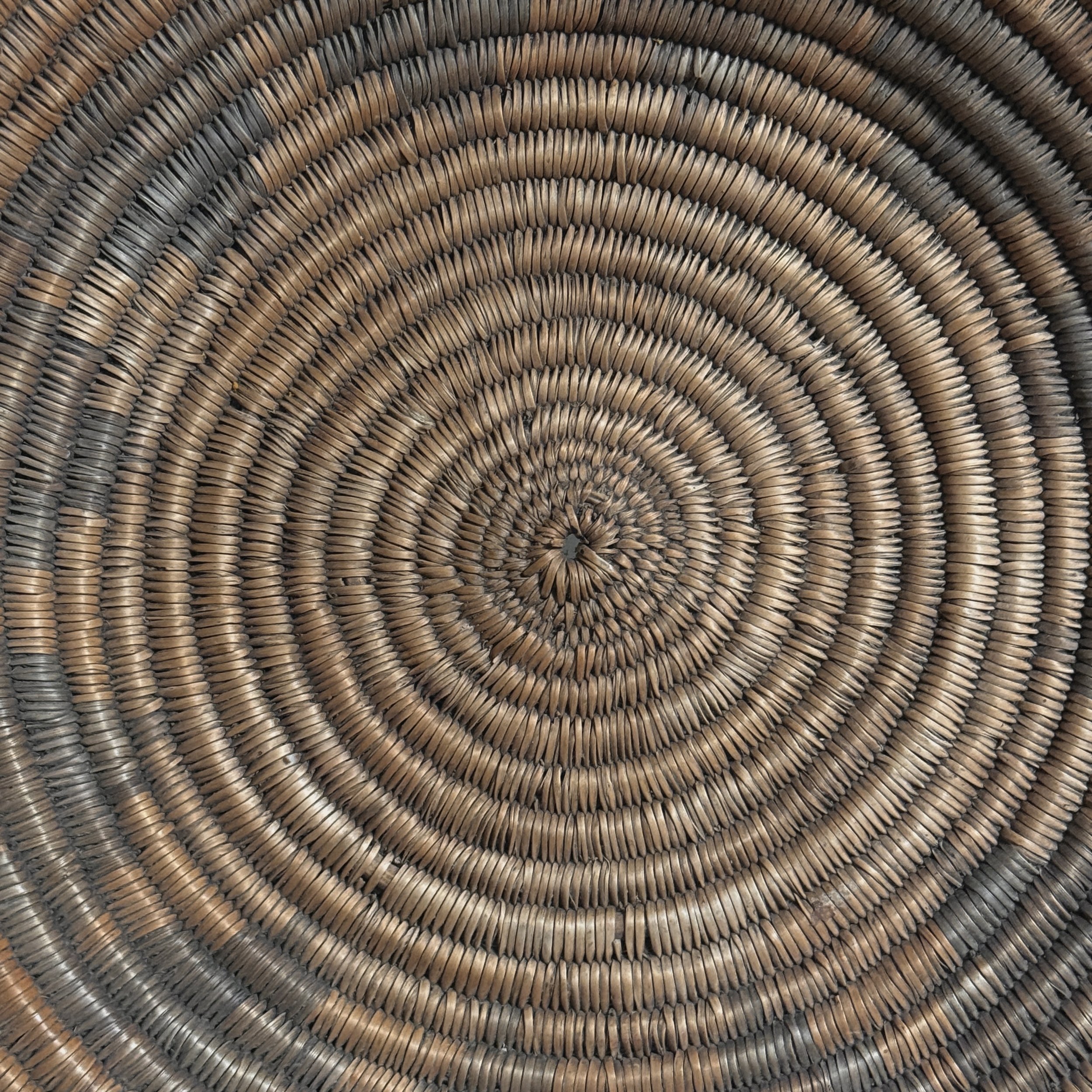 Image 4 of 9
Image 4 of 9

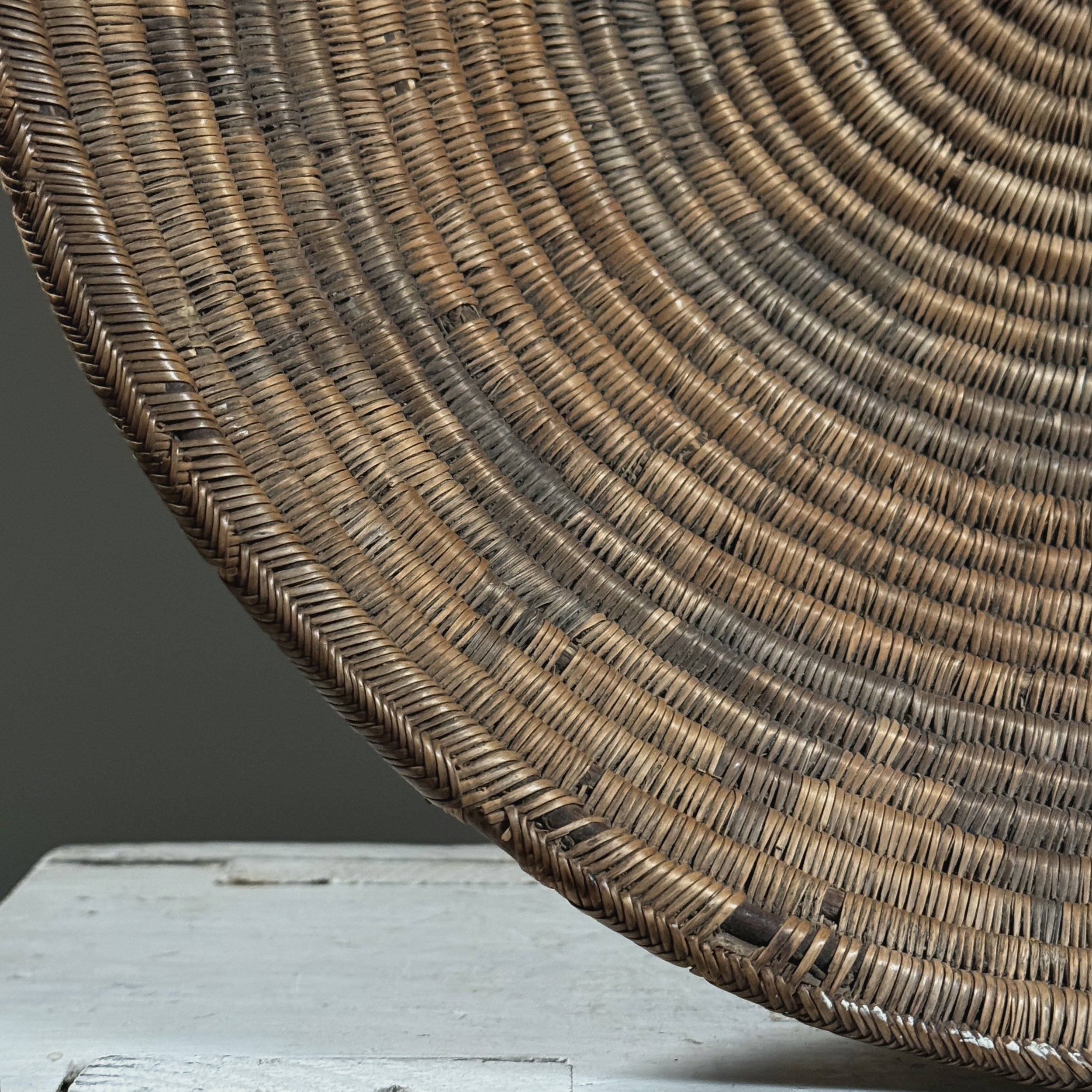 Image 5 of 9
Image 5 of 9

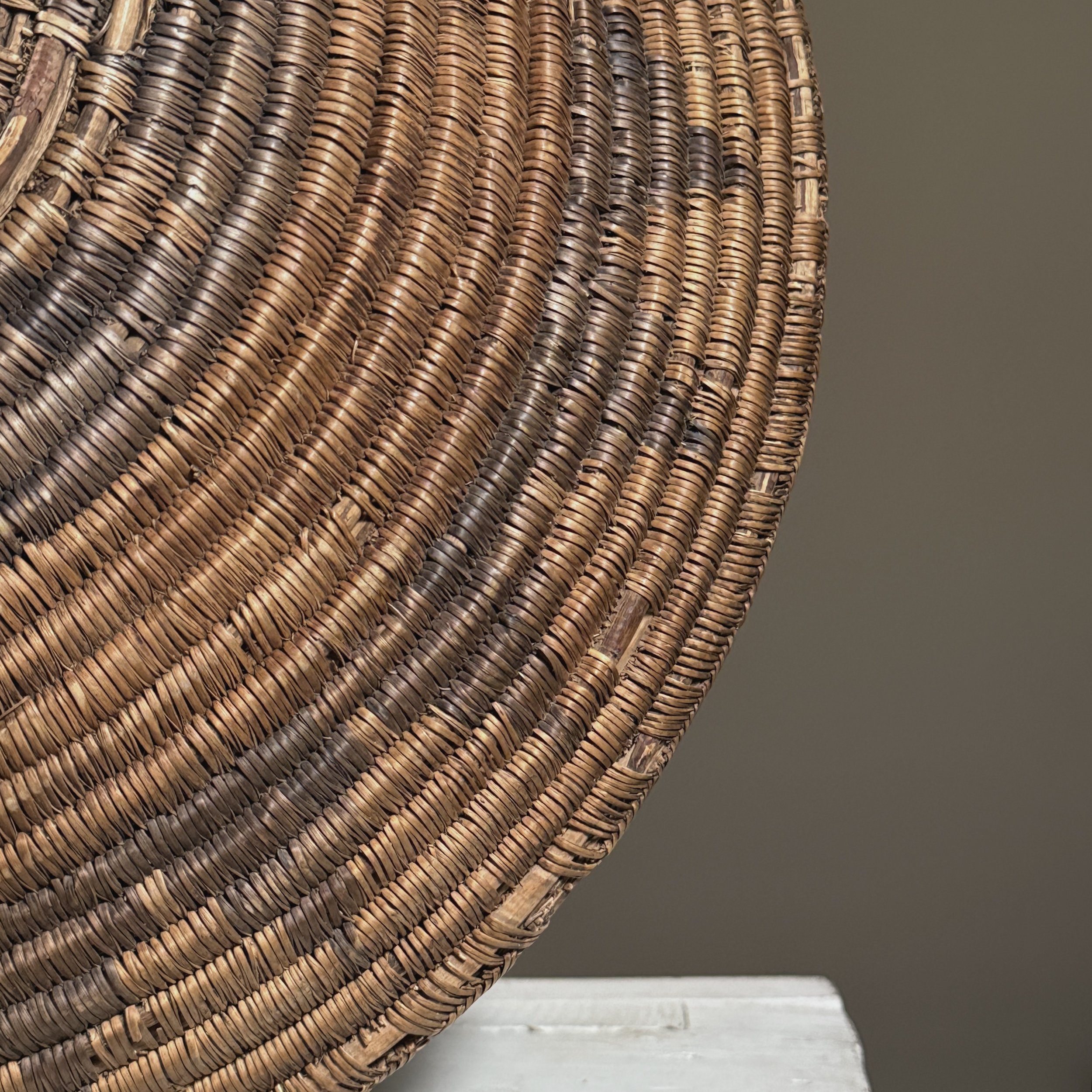 Image 6 of 9
Image 6 of 9

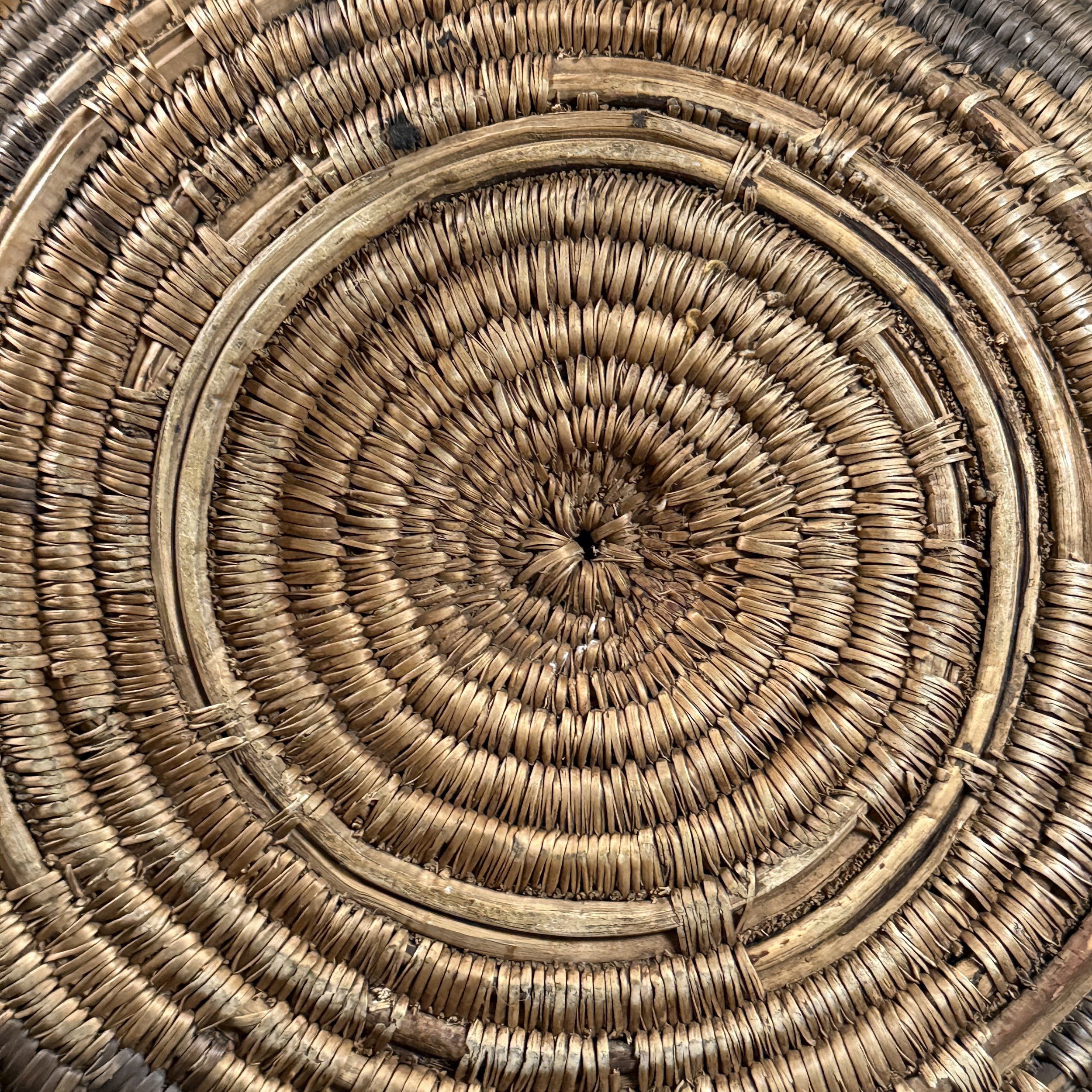 Image 7 of 9
Image 7 of 9

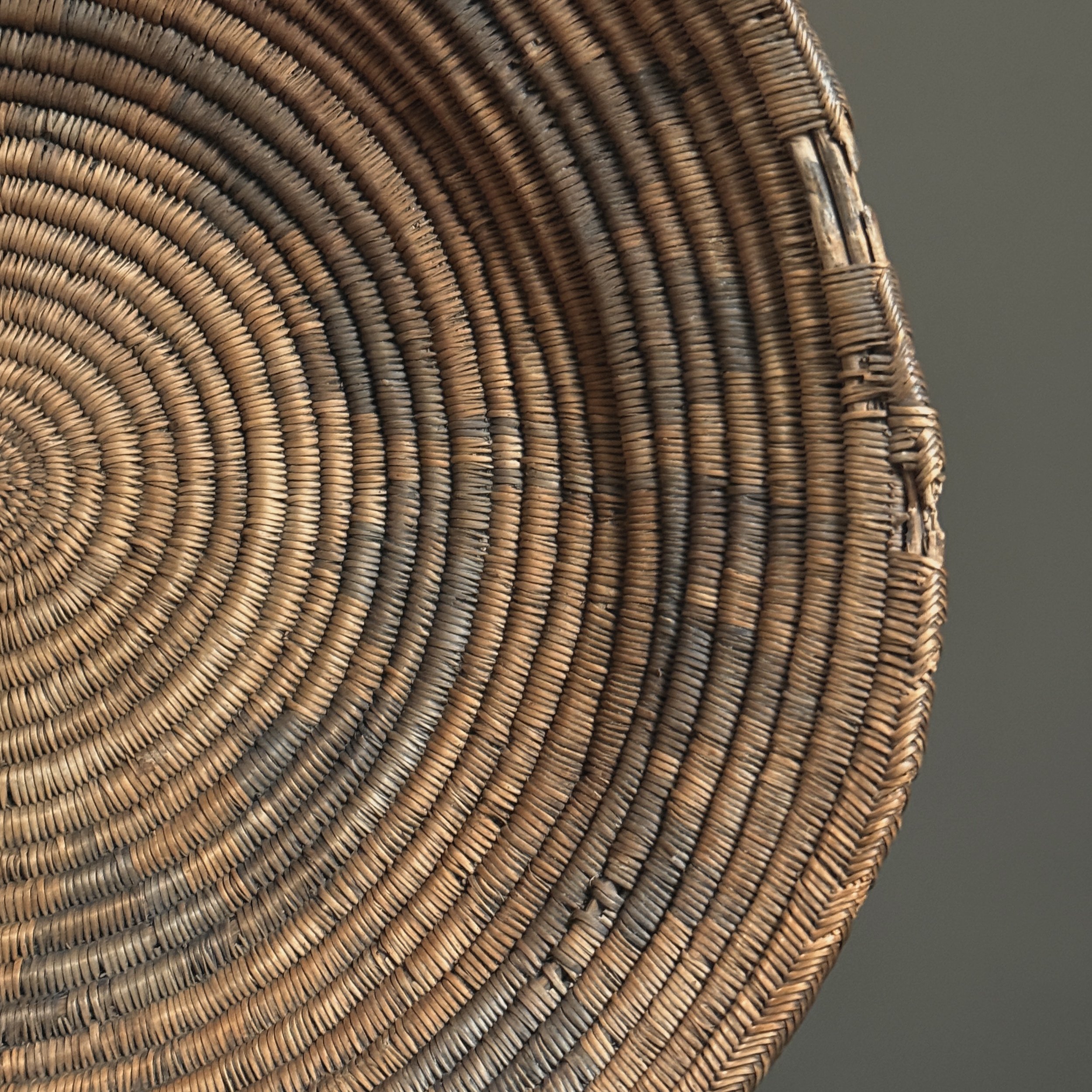 Image 8 of 9
Image 8 of 9

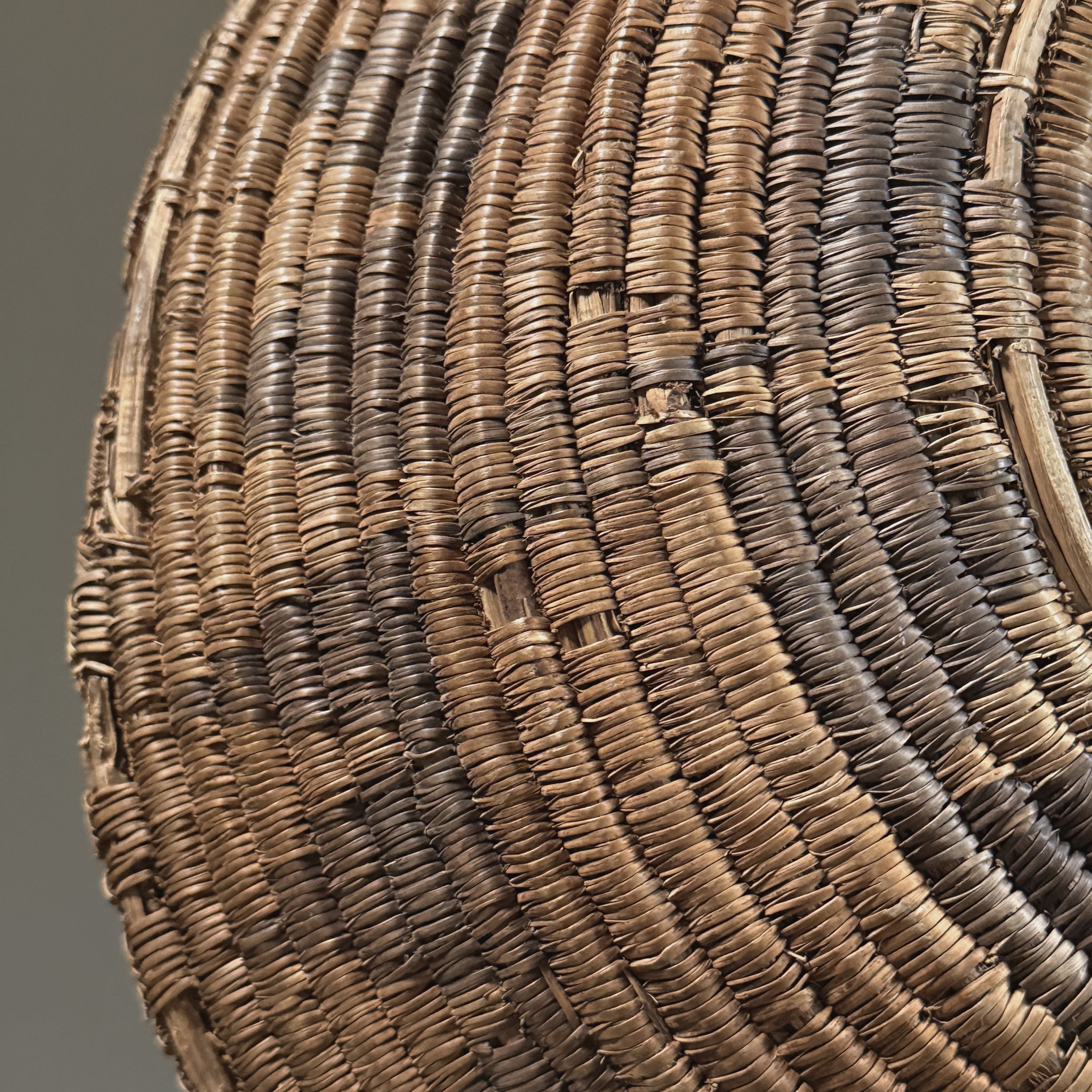 Image 9 of 9
Image 9 of 9










Antique Yucca Coiled Navajo Wedding Basket/Tray
Navajo Wedding Basket/Tray
Circa 1910
Yucca and sumac fibers with natural dyes
Diameter: 16 in (40.6 cm) | Height: 4.25 in (10.8 cm)
This significant ceremonial basket represents the traditional Diné weaving practices of the early 20th century. Woven from yucca fibers with sumac accents, it features two concentric black serrated circles enclosing three bands of russet patterning. The sacred *shipapu* (design break) remains visible as a subtle ridge along the rim's finish, its black-outlined orientation traditionally facing east during rituals to maintain spiritual connection.
Cultural Significance:
- Used in wedding and healing ceremonies
- Impregnated with ceremonial corn meal and pollen
- Structural wear patterns attest to ritual use
- *Shipapu* functioned as both spiritual portal and tactile guide
Design Symbolism:
- Black circles: Represent the rainbow guardian (Yoołgaii)
- Red bands: Symbolize sunlight and life force
- Shipapu (opening):
* Always faces east toward the Holy People
* Serves as a spiritual doorway
* The raised stitch ("bump") allows orientation by touch
Condition Notes:
- Stable structural integrity
- Faded but legible design elements
- Expected edge wear from ceremonial use. Please refer to photos provided for details.
Comparable examples are held in the collections of the Heard Museum (Phoenix) and National Museum of the American Indian (Washington, D.C.).
Navajo Wedding Basket/Tray
Circa 1910
Yucca and sumac fibers with natural dyes
Diameter: 16 in (40.6 cm) | Height: 4.25 in (10.8 cm)
This significant ceremonial basket represents the traditional Diné weaving practices of the early 20th century. Woven from yucca fibers with sumac accents, it features two concentric black serrated circles enclosing three bands of russet patterning. The sacred *shipapu* (design break) remains visible as a subtle ridge along the rim's finish, its black-outlined orientation traditionally facing east during rituals to maintain spiritual connection.
Cultural Significance:
- Used in wedding and healing ceremonies
- Impregnated with ceremonial corn meal and pollen
- Structural wear patterns attest to ritual use
- *Shipapu* functioned as both spiritual portal and tactile guide
Design Symbolism:
- Black circles: Represent the rainbow guardian (Yoołgaii)
- Red bands: Symbolize sunlight and life force
- Shipapu (opening):
* Always faces east toward the Holy People
* Serves as a spiritual doorway
* The raised stitch ("bump") allows orientation by touch
Condition Notes:
- Stable structural integrity
- Faded but legible design elements
- Expected edge wear from ceremonial use. Please refer to photos provided for details.
Comparable examples are held in the collections of the Heard Museum (Phoenix) and National Museum of the American Indian (Washington, D.C.).


